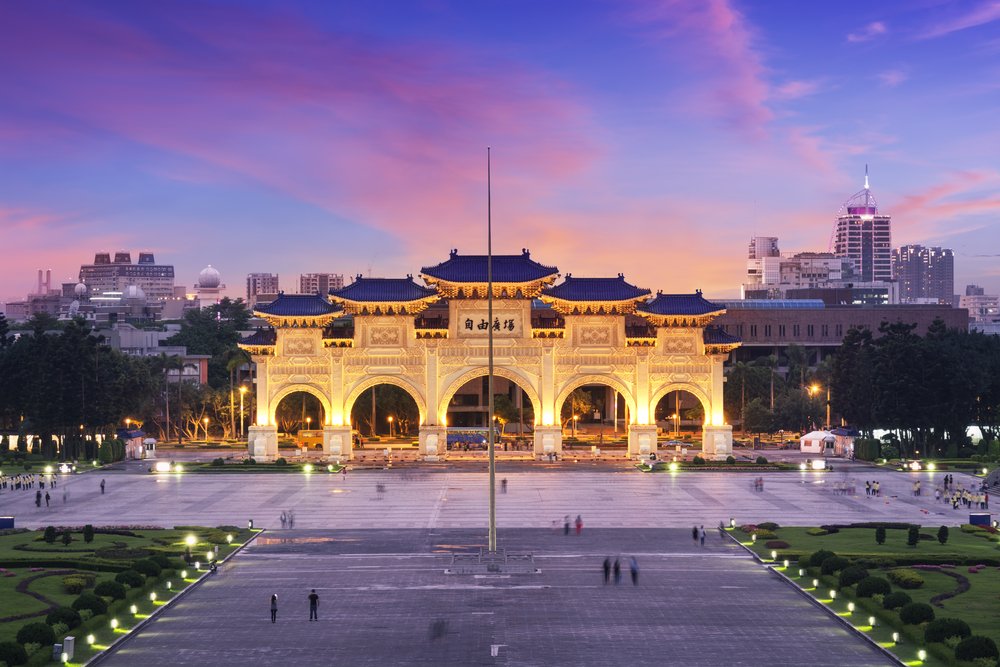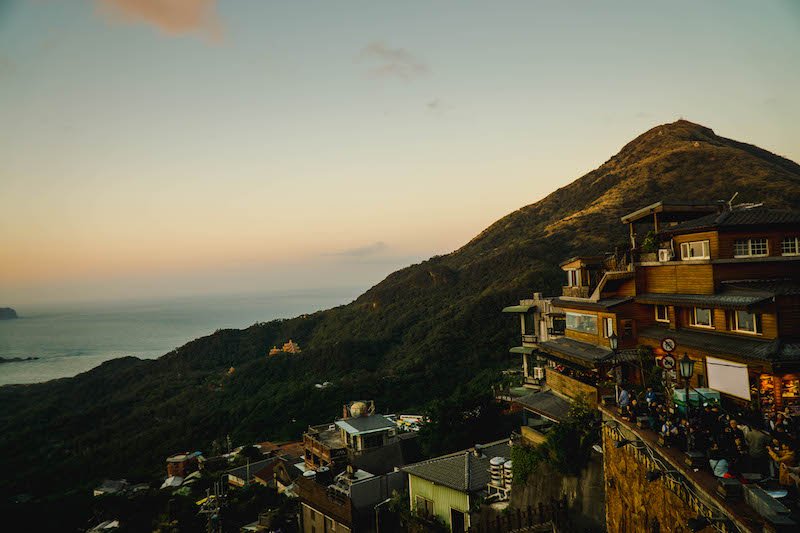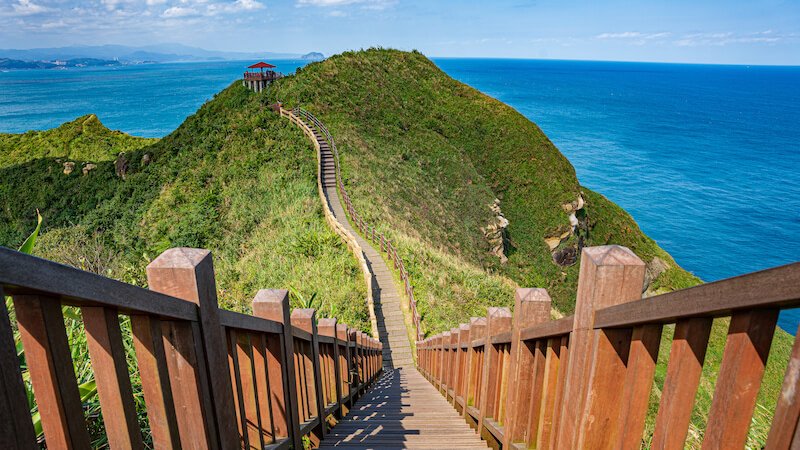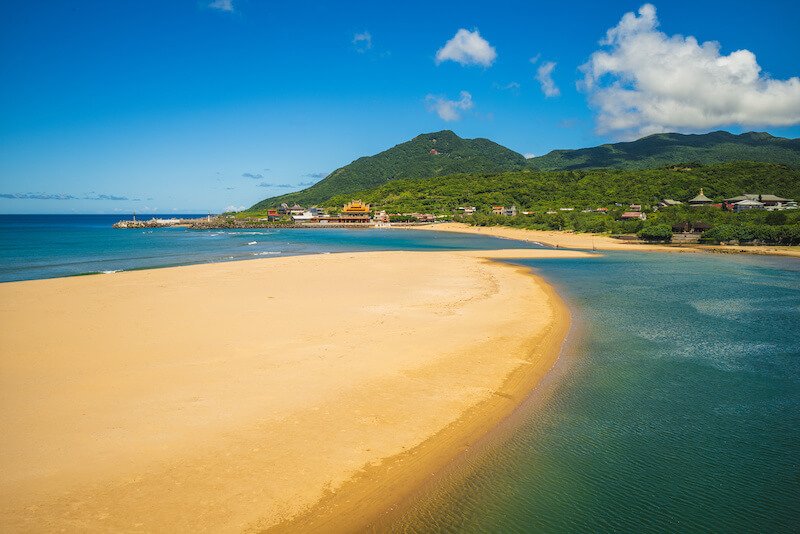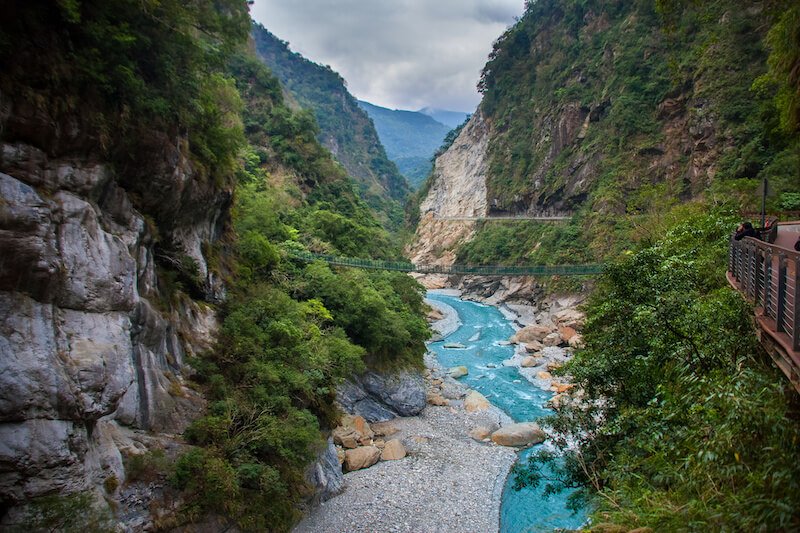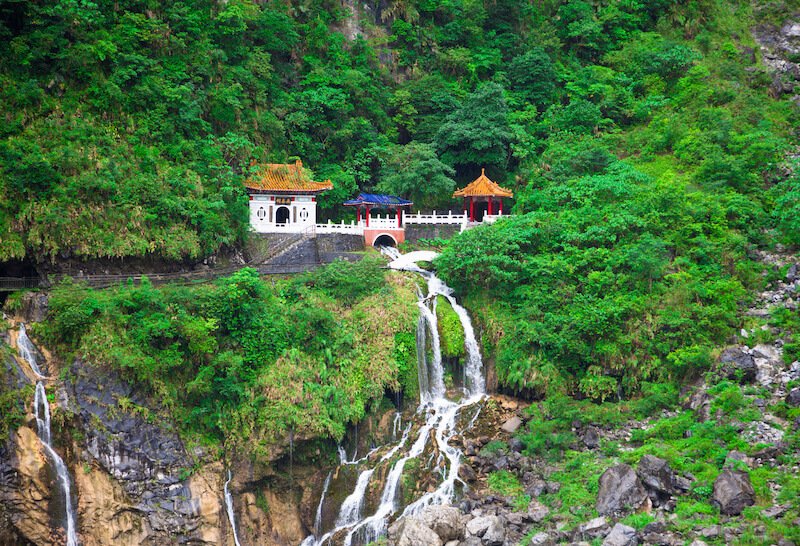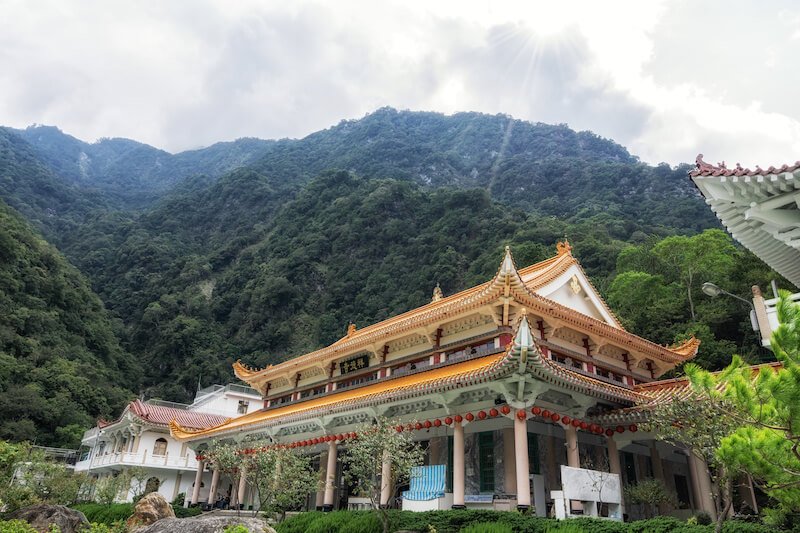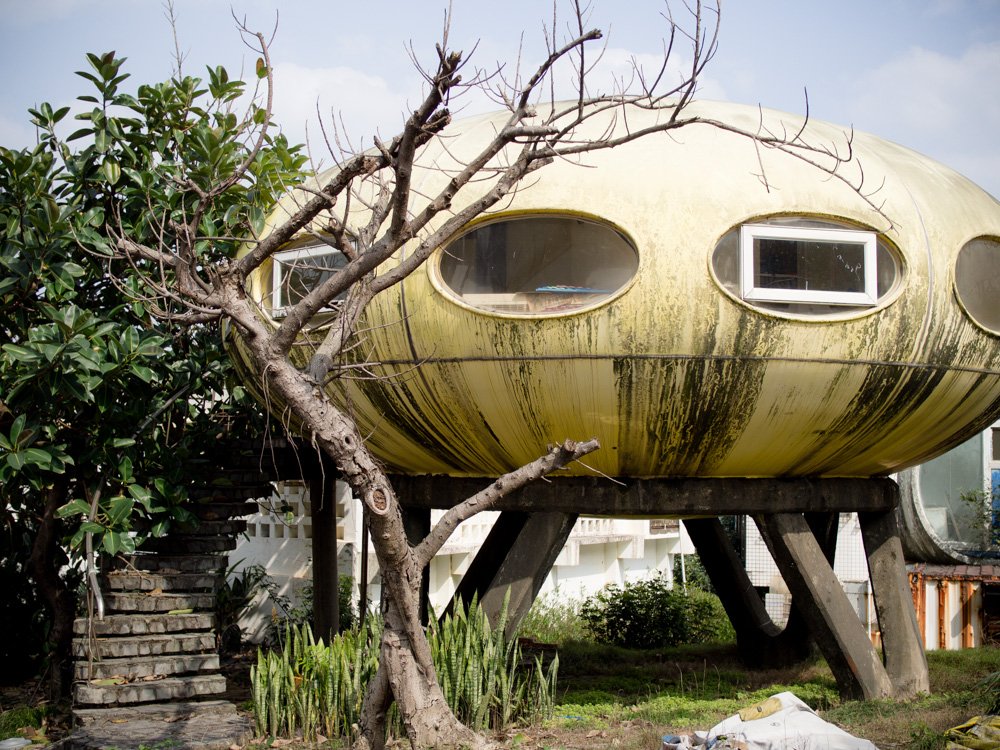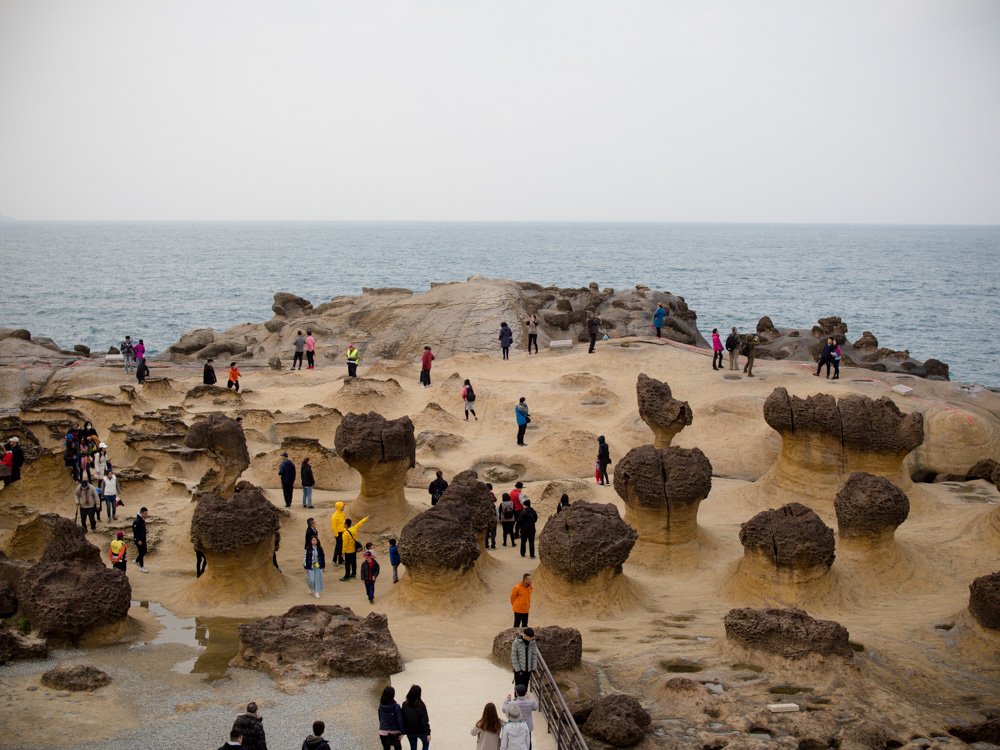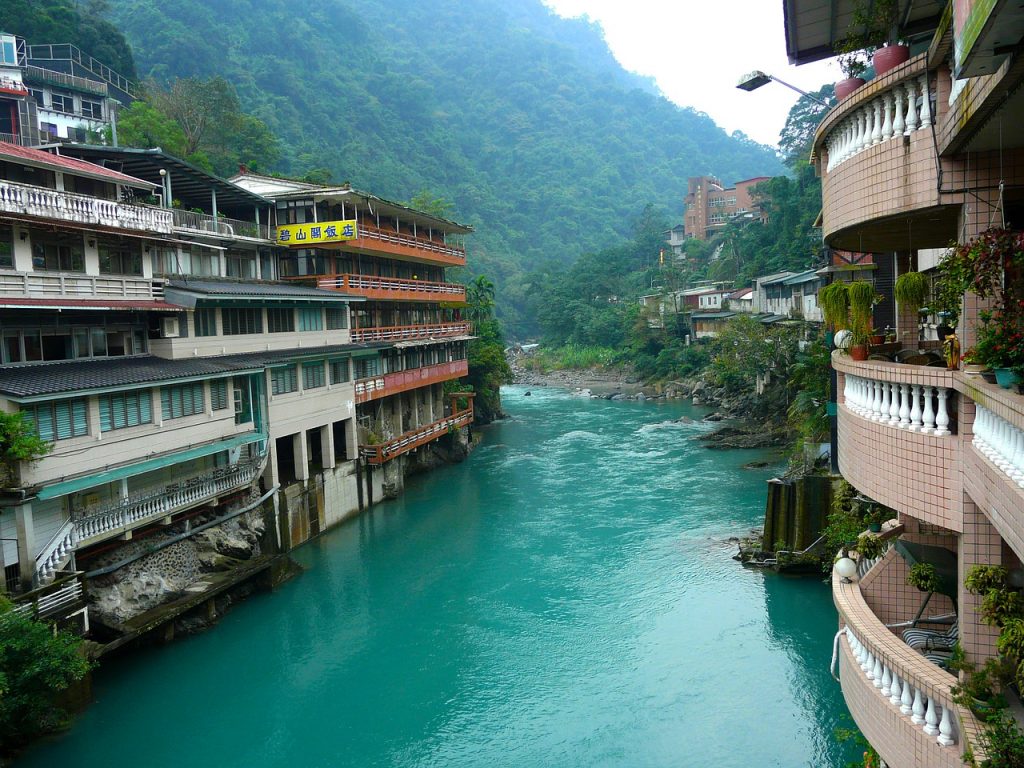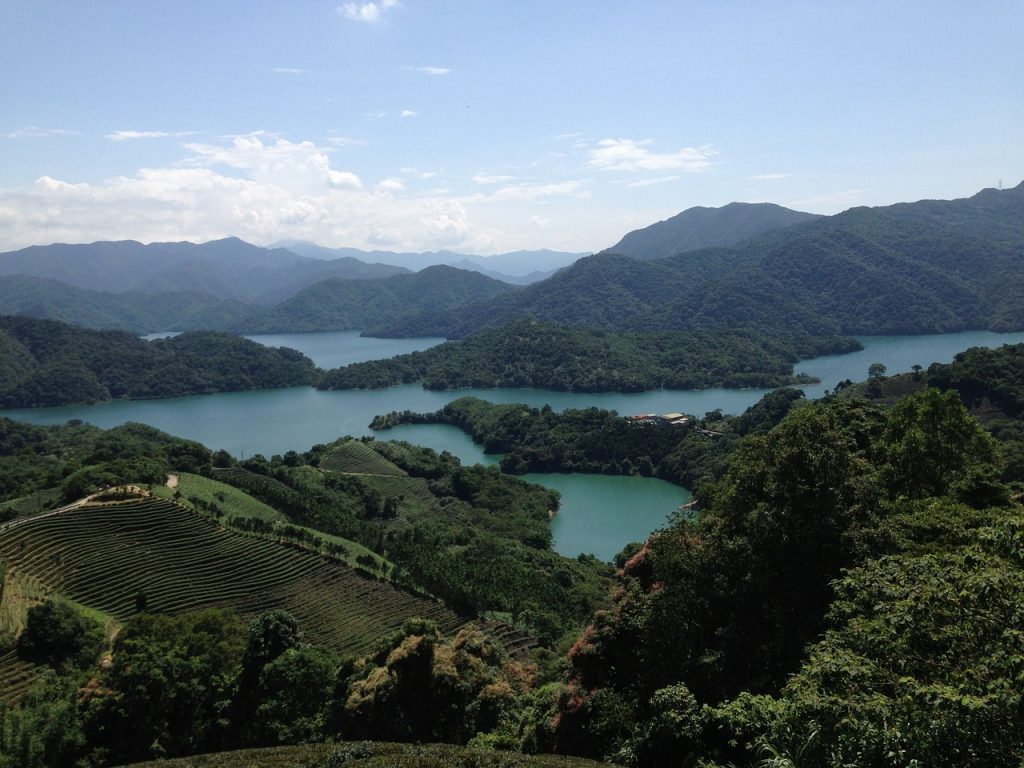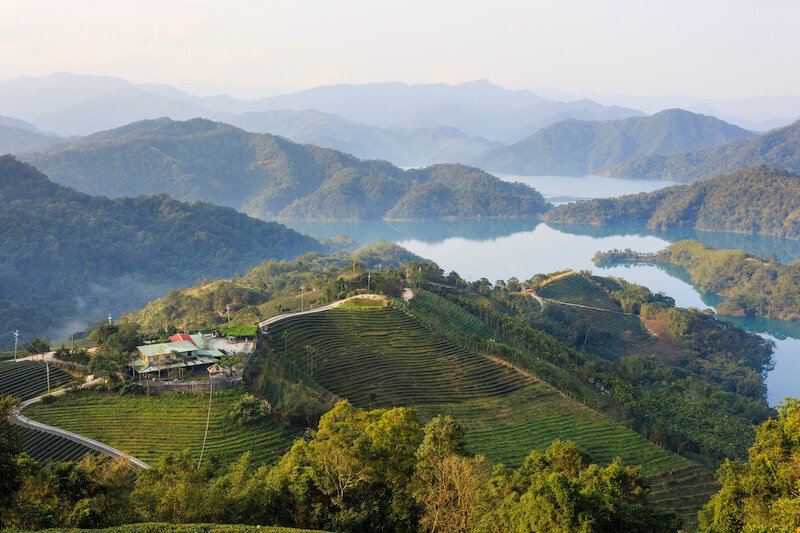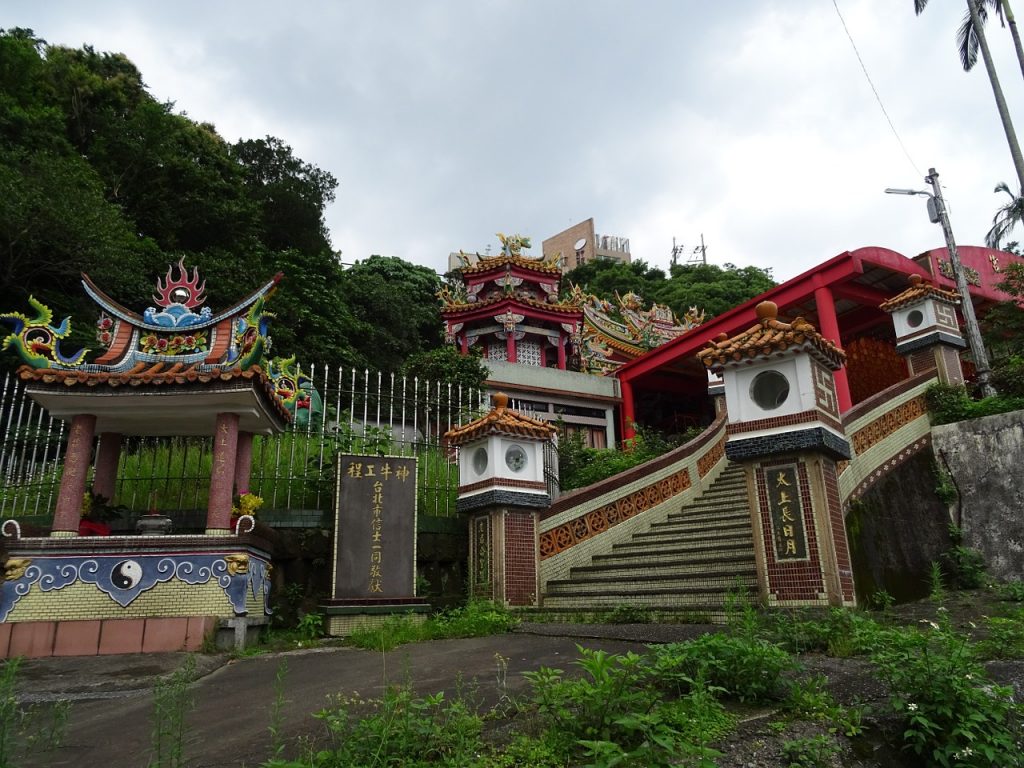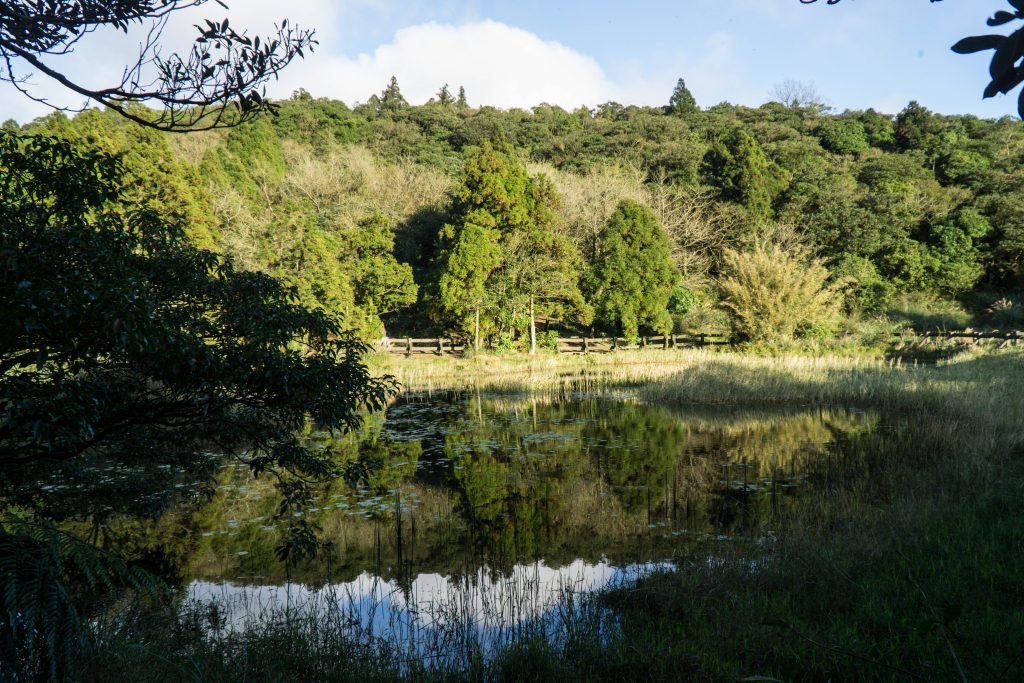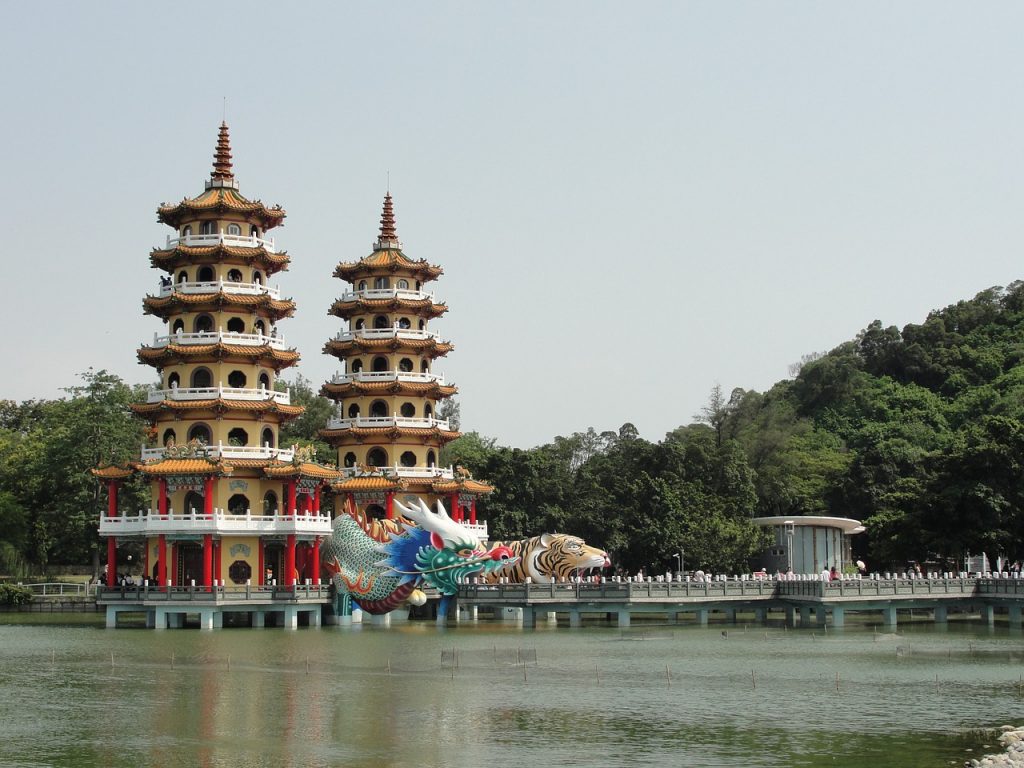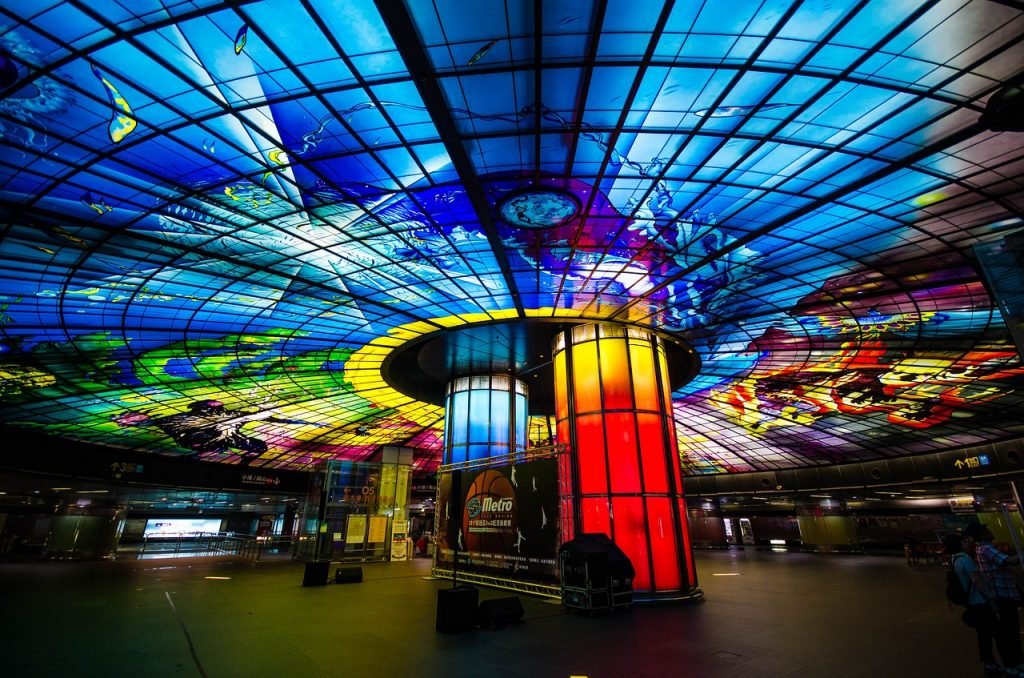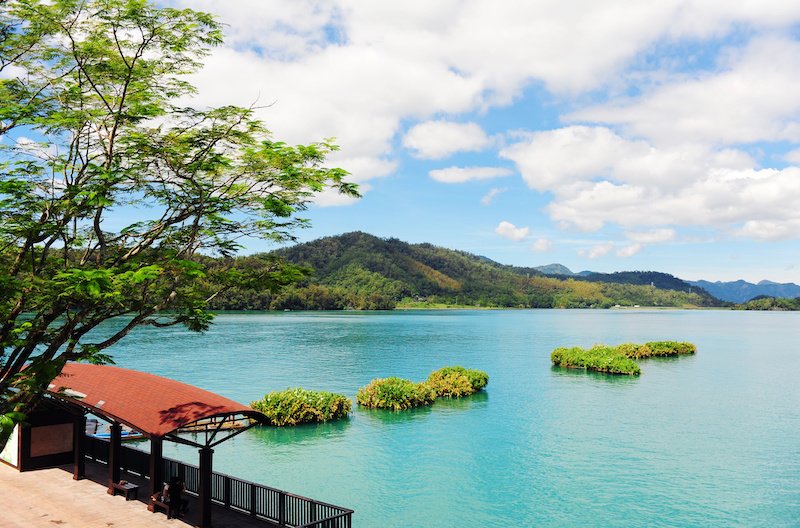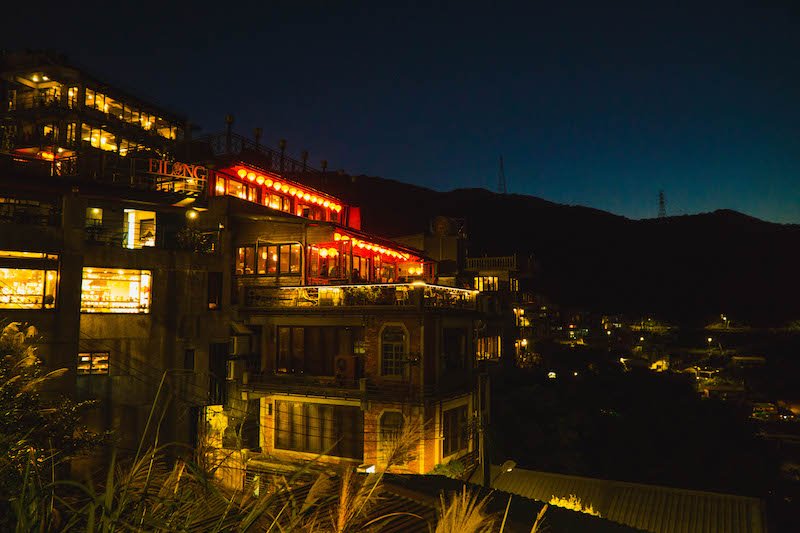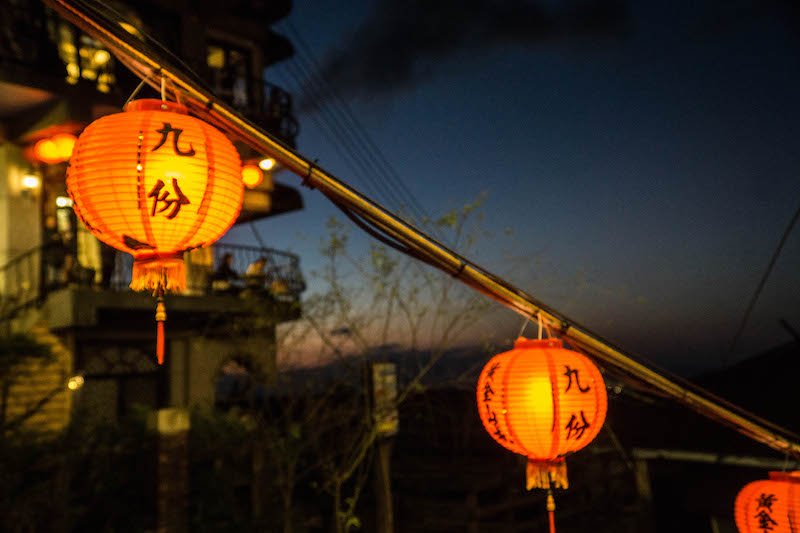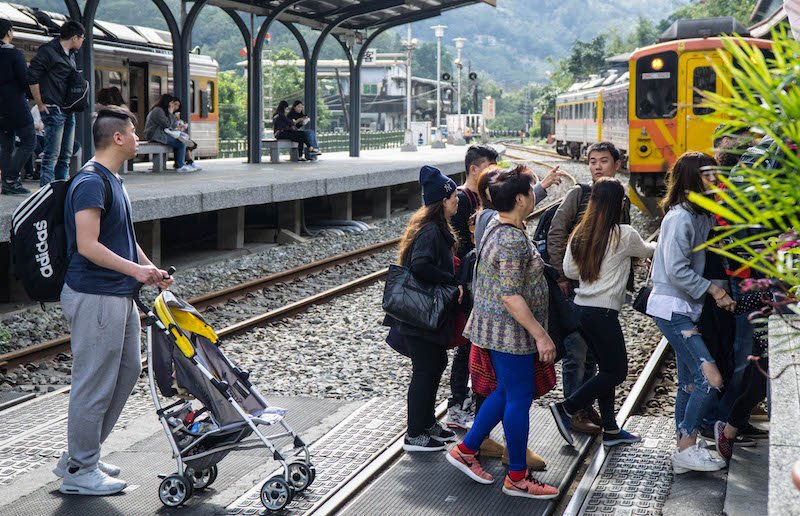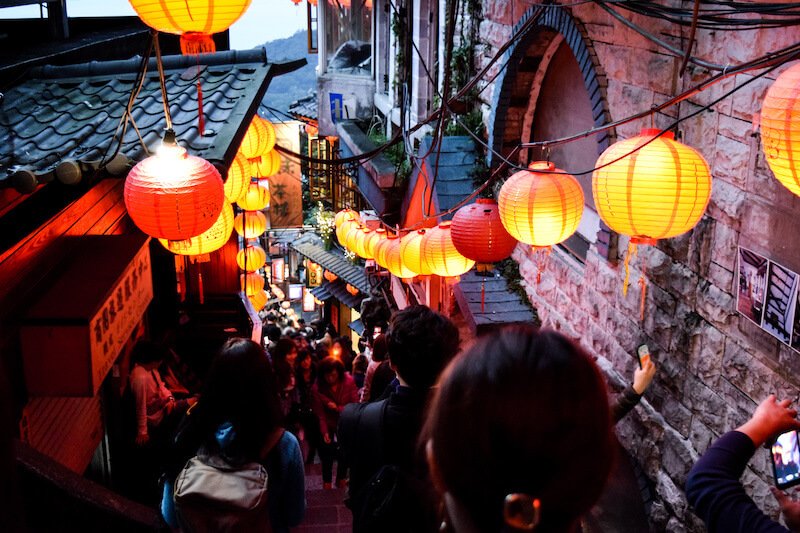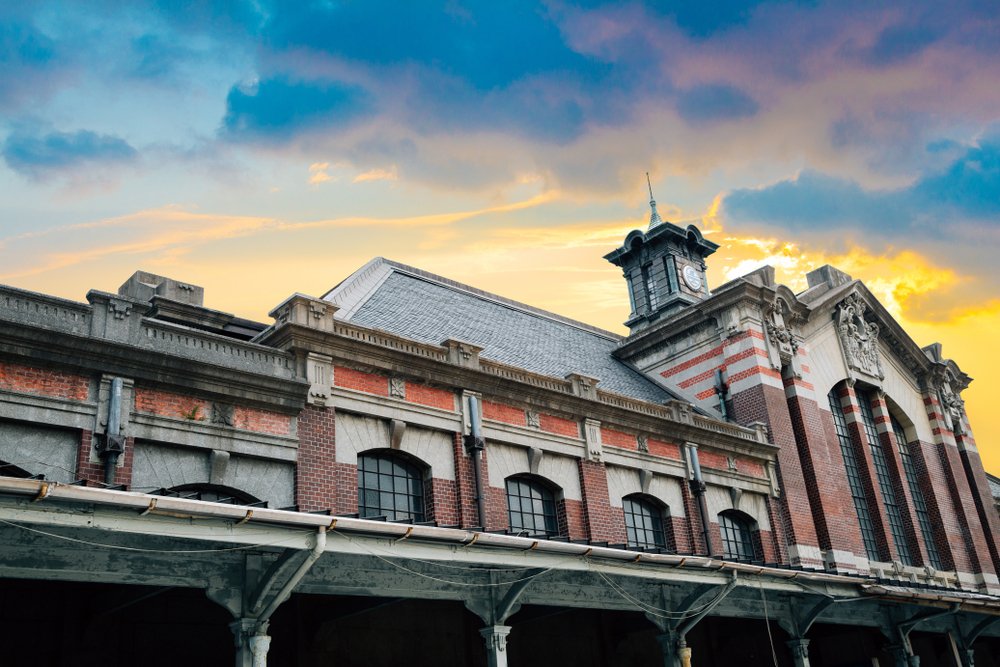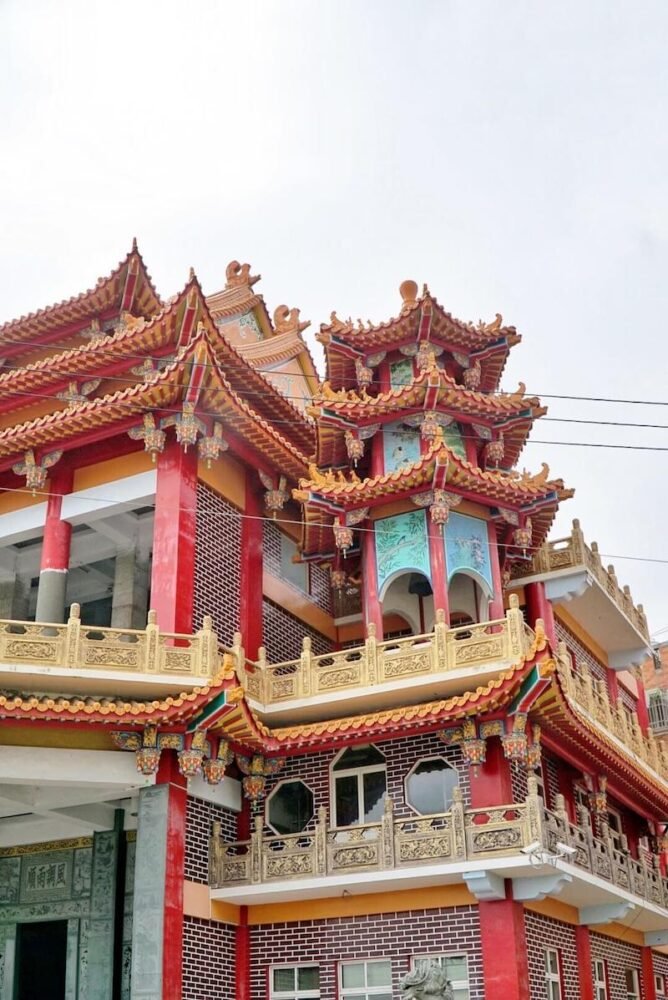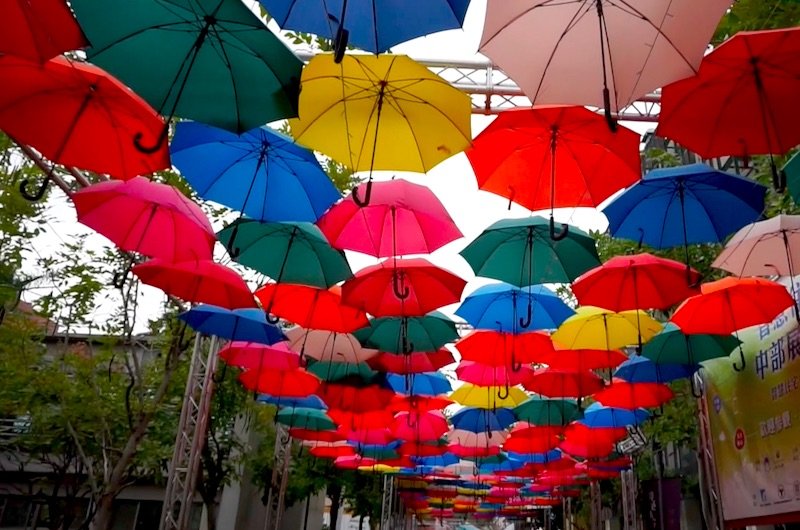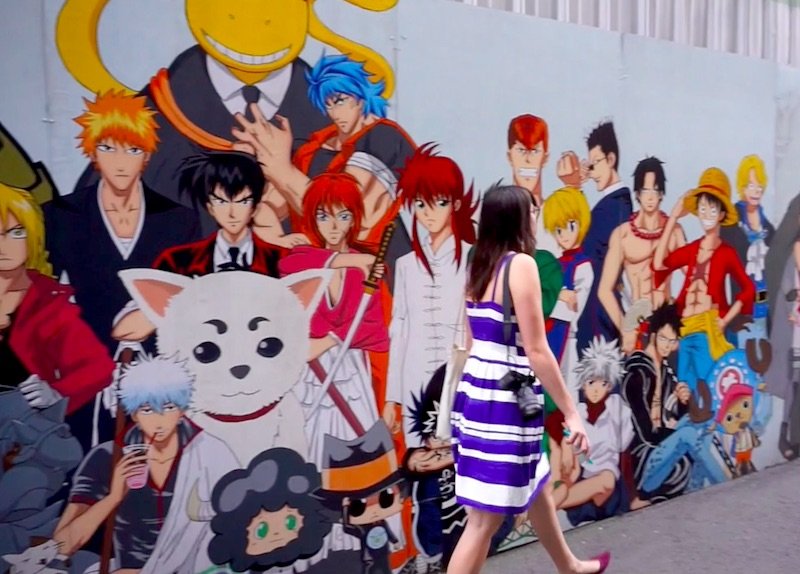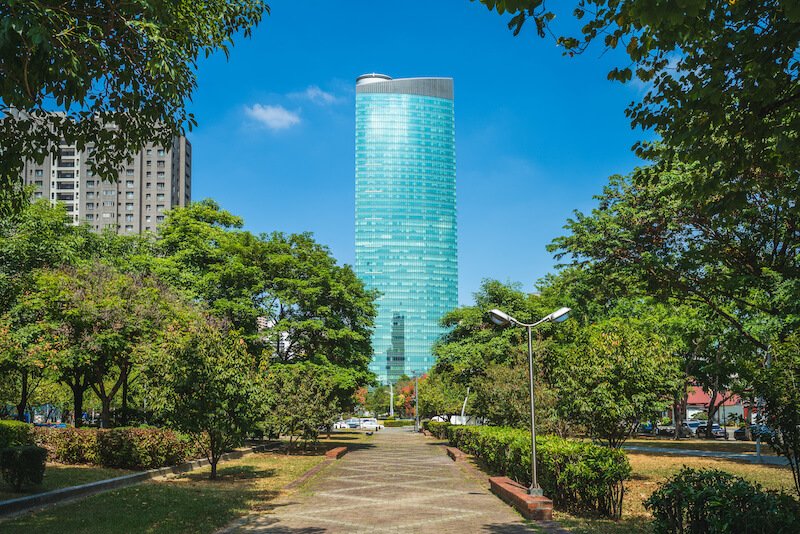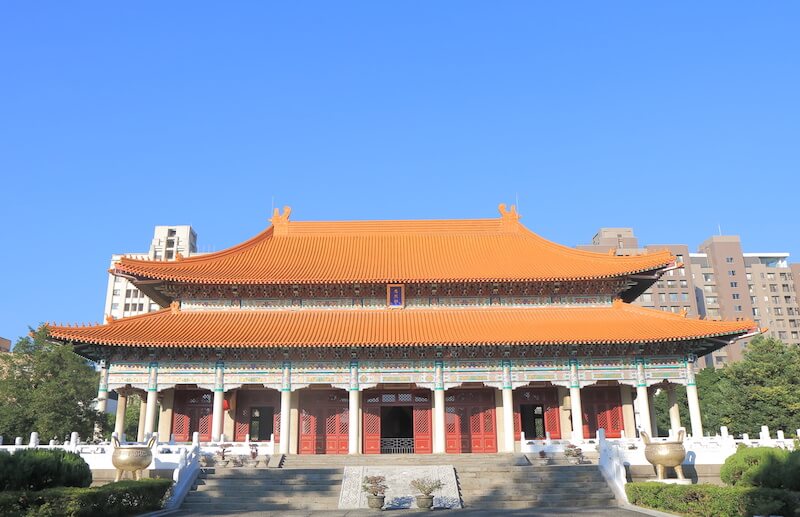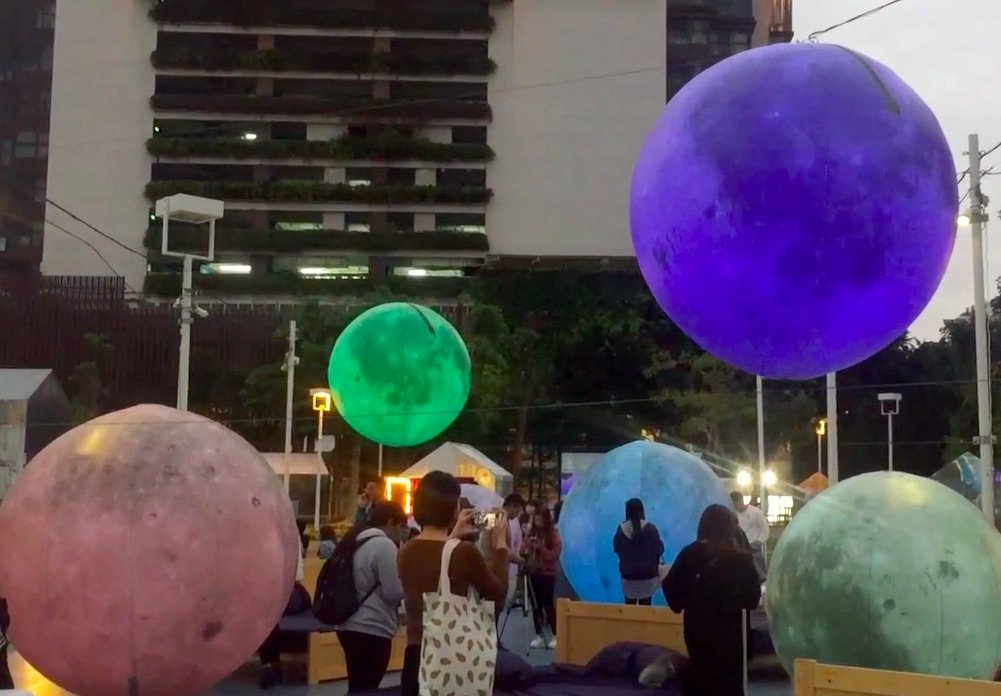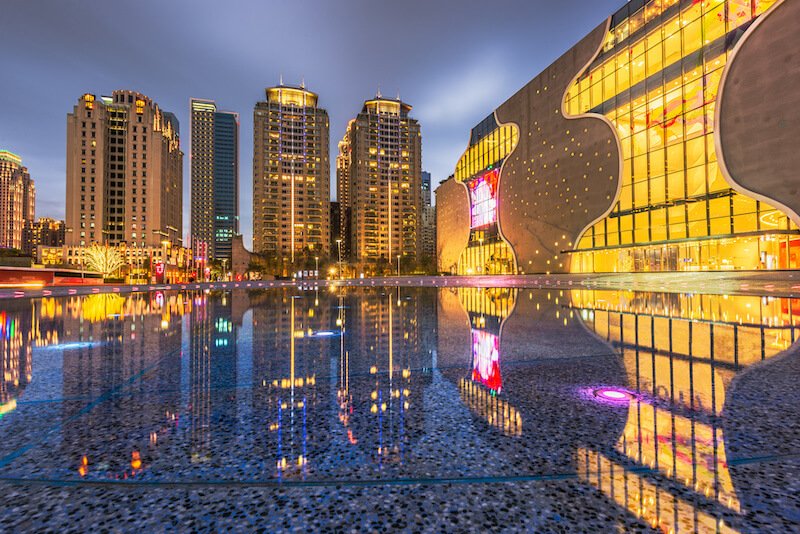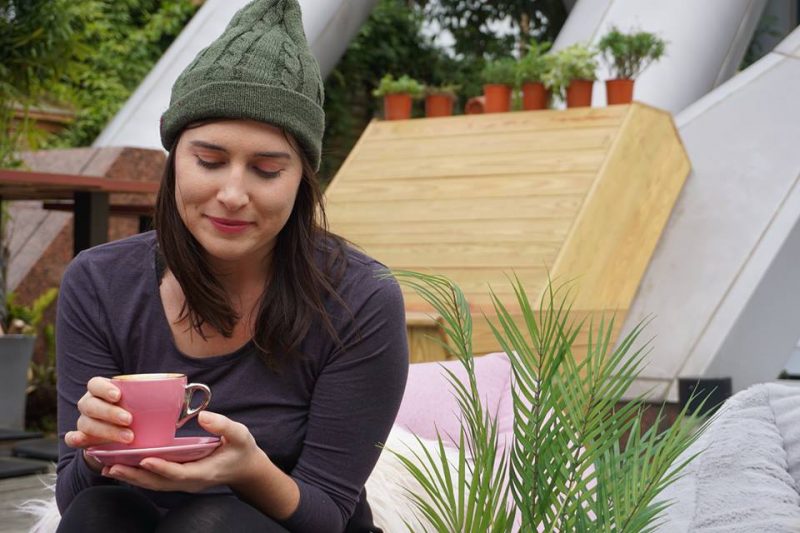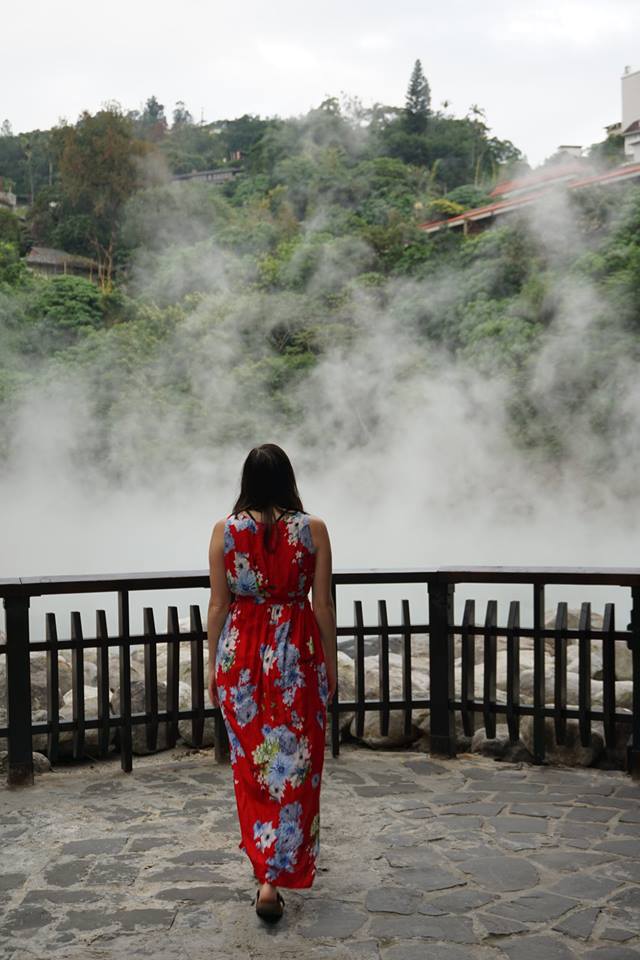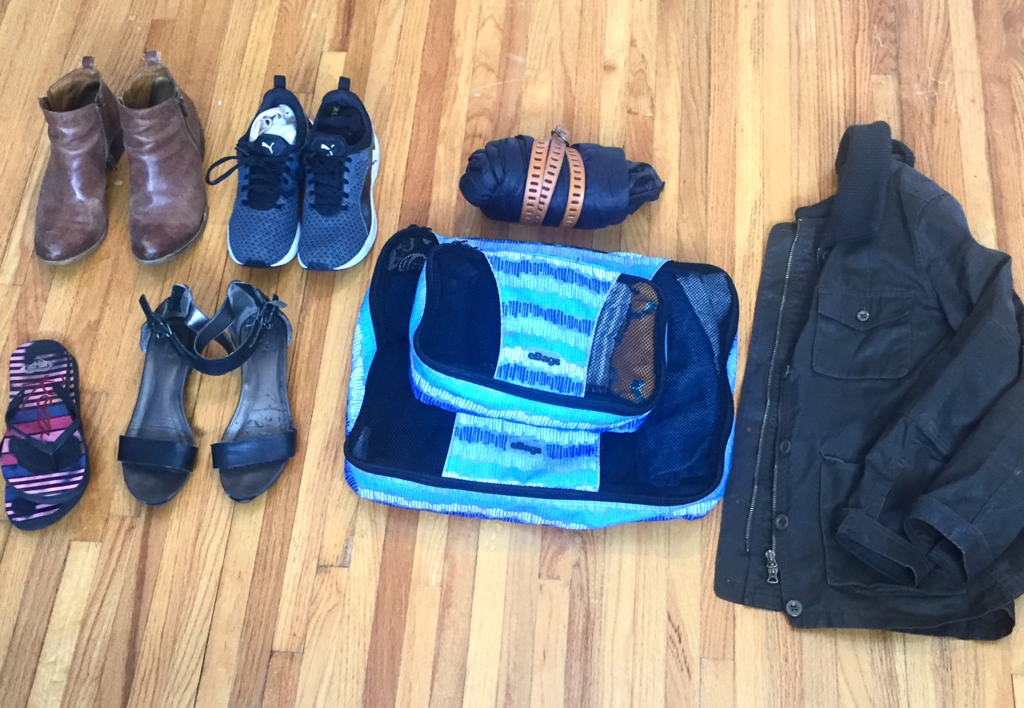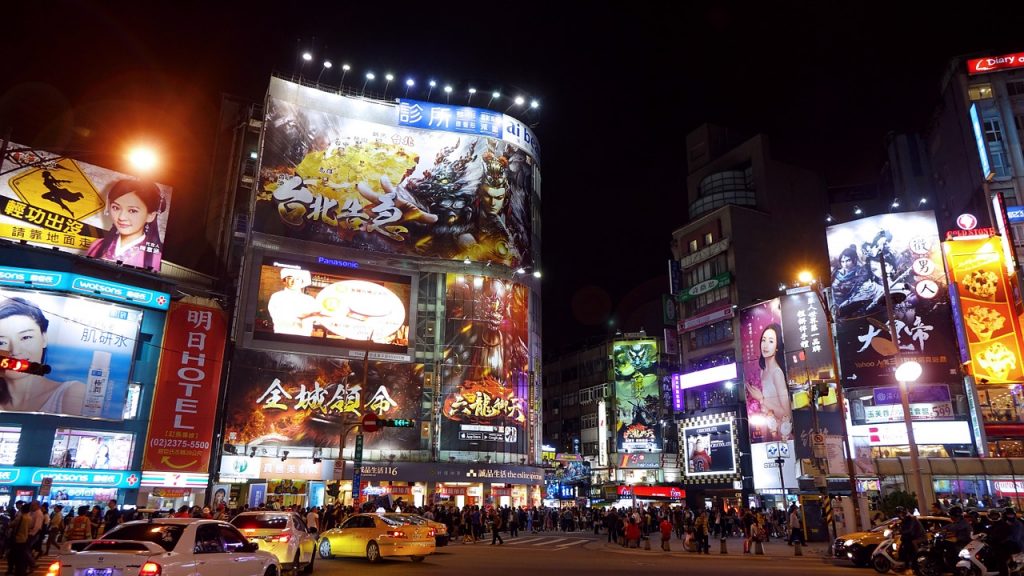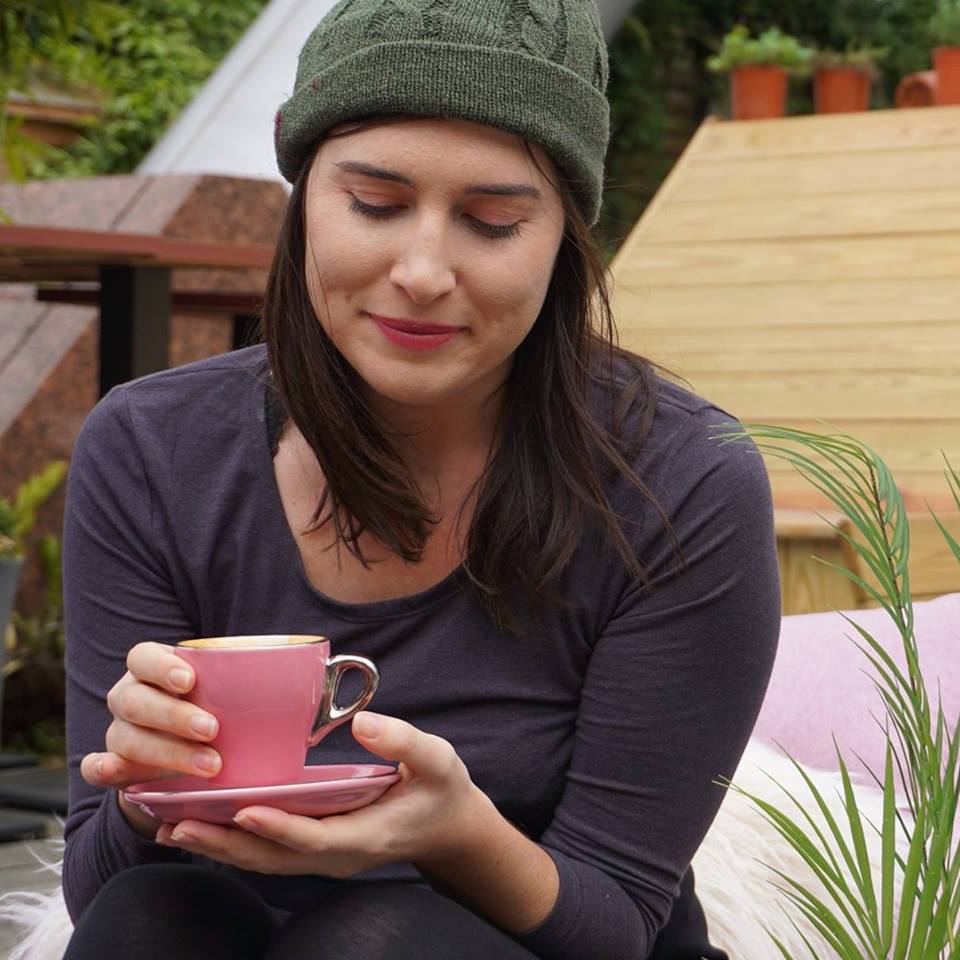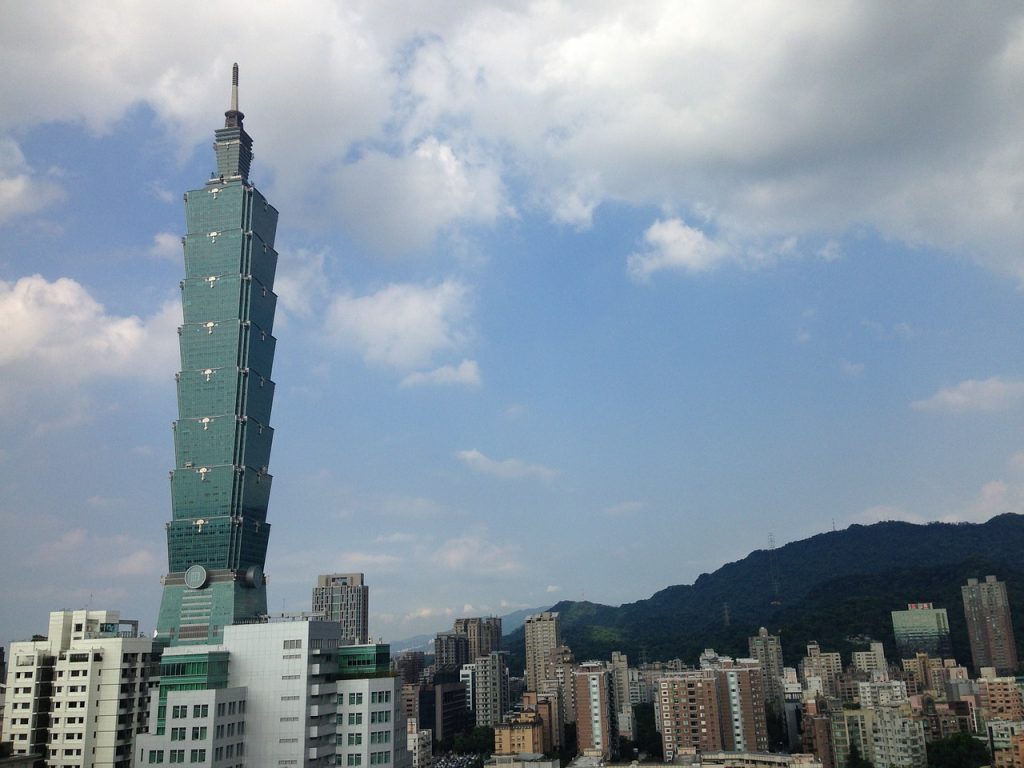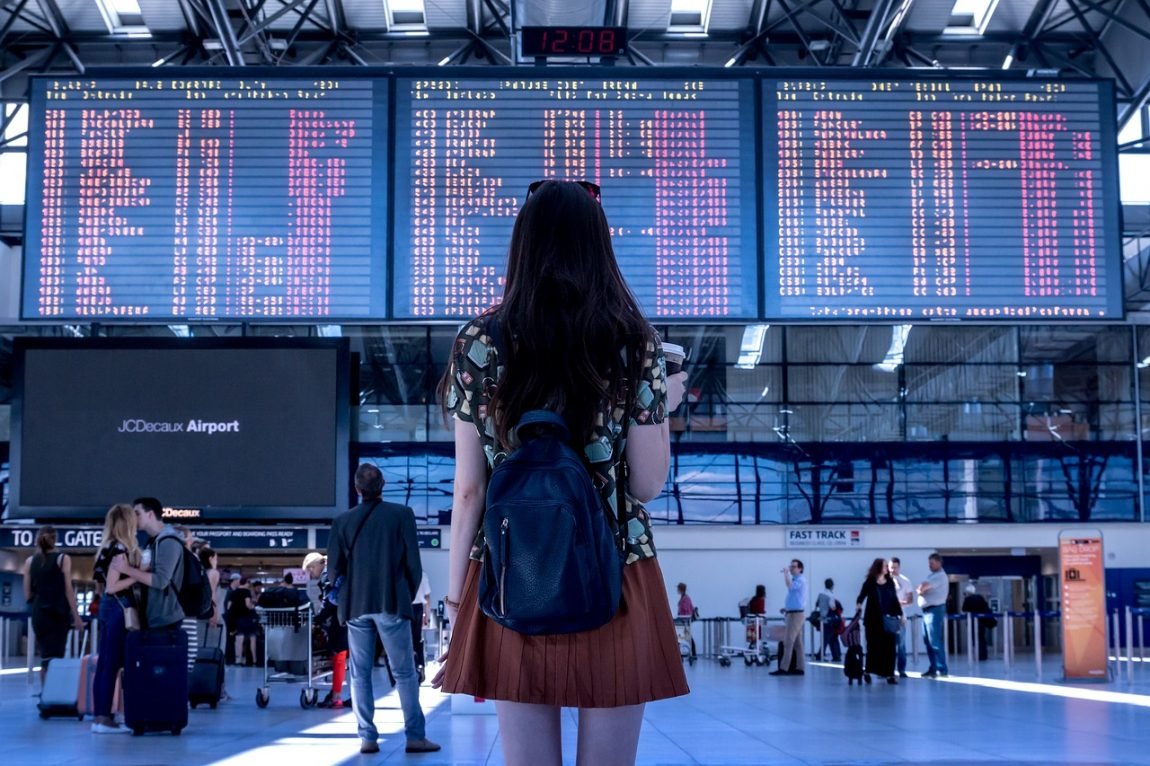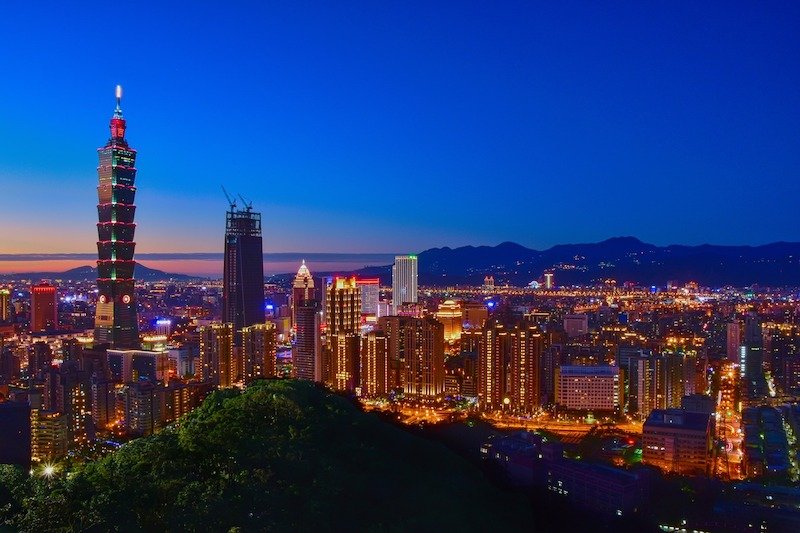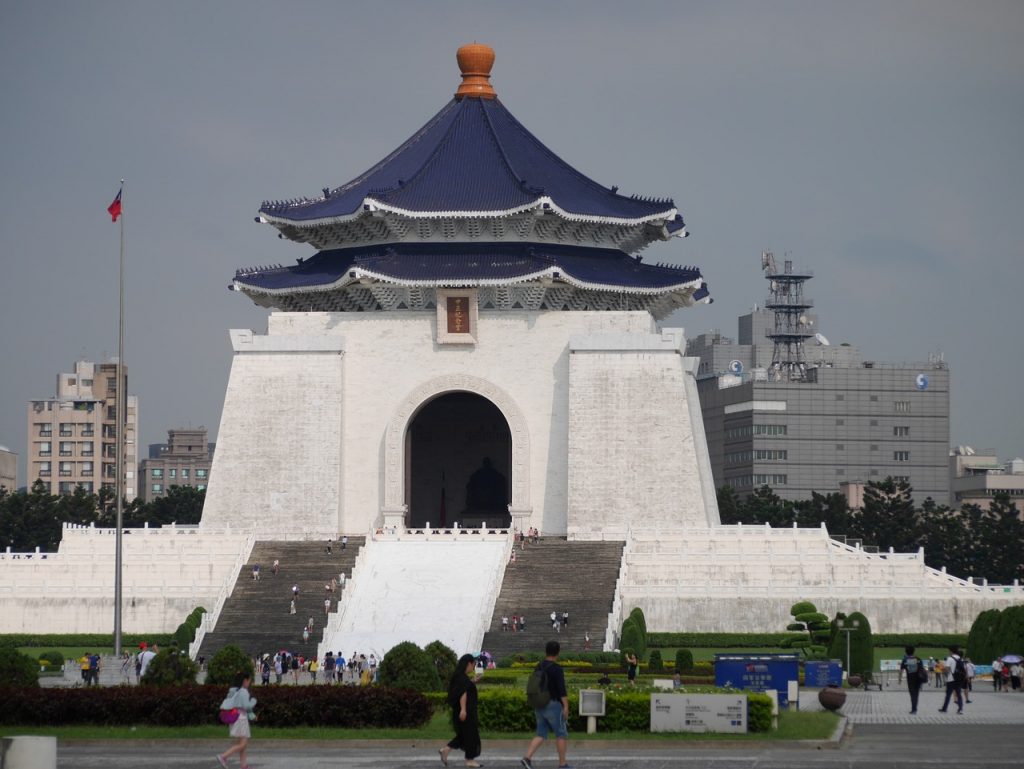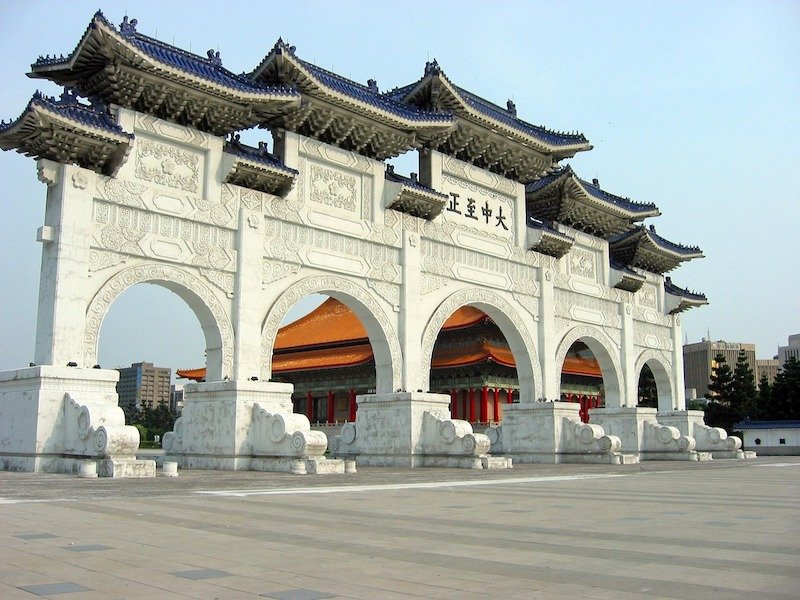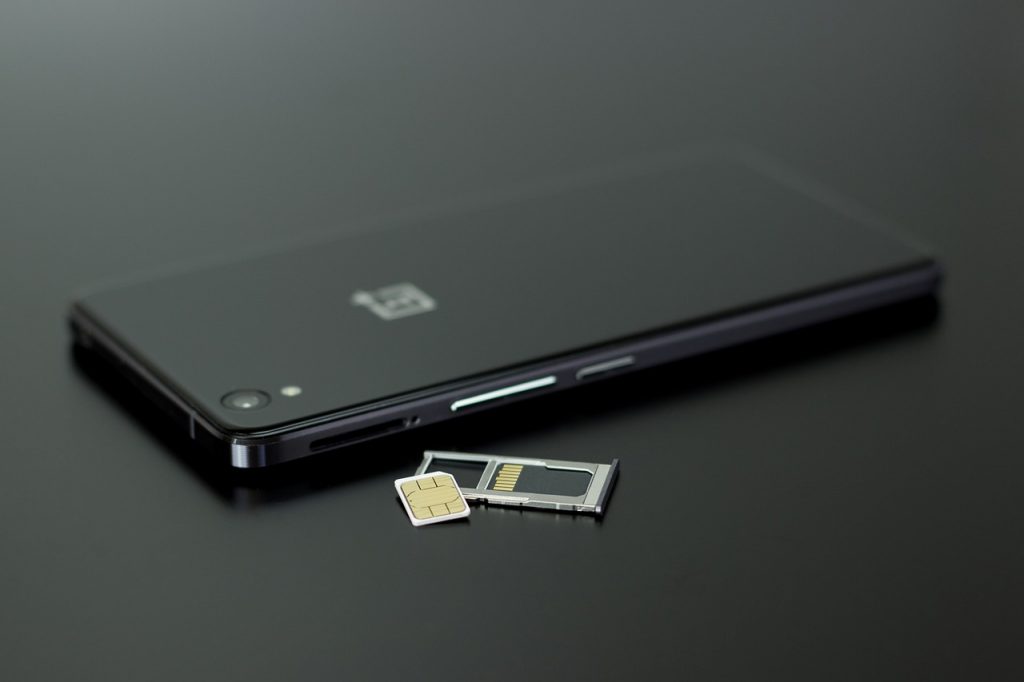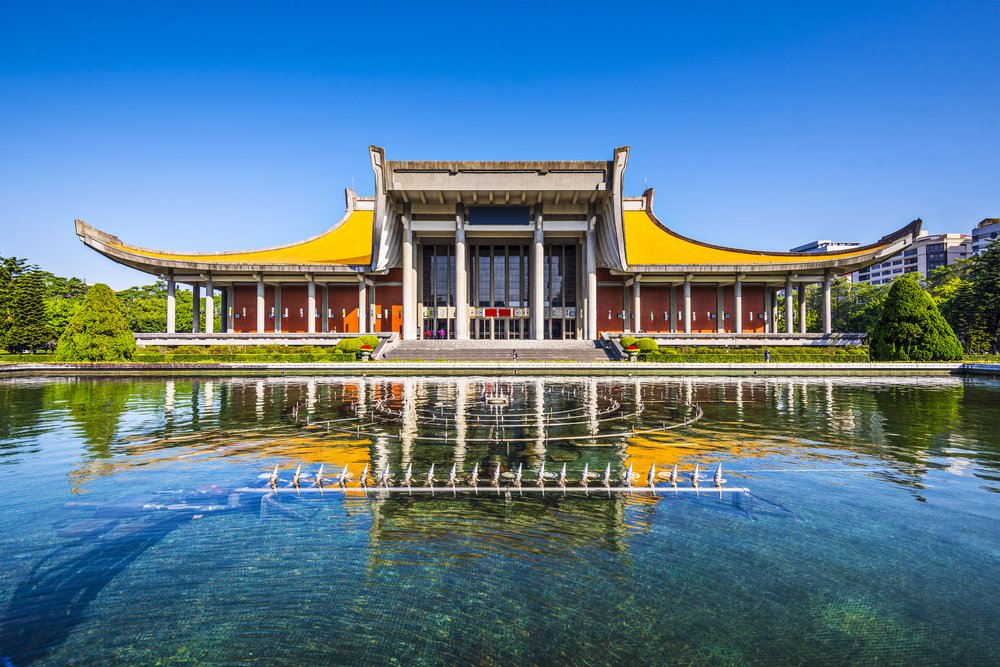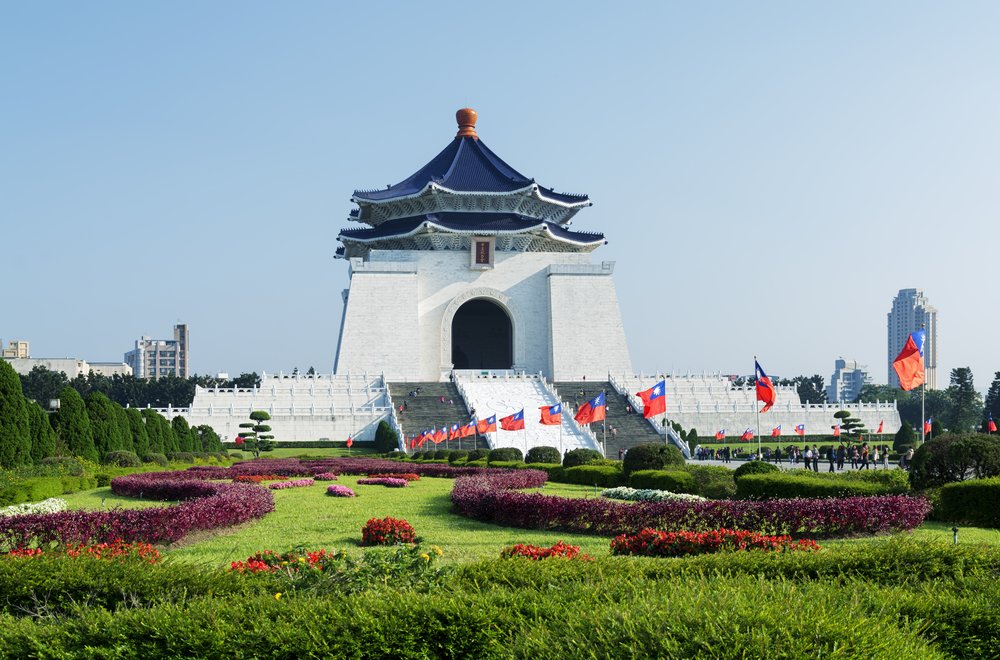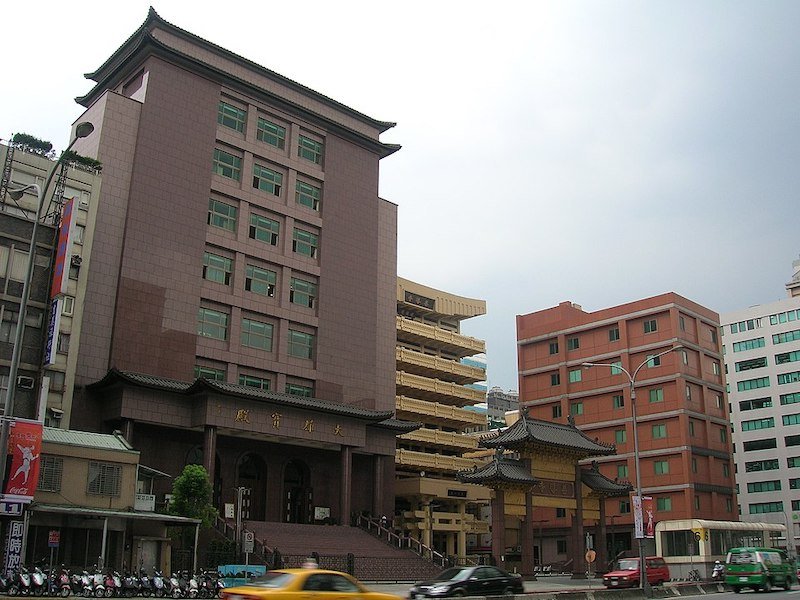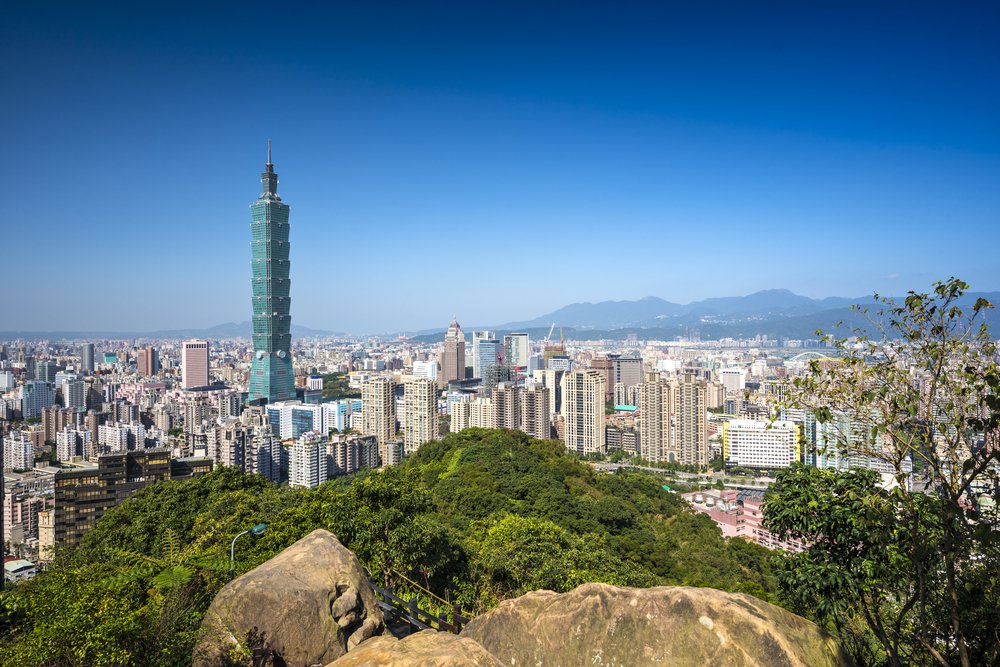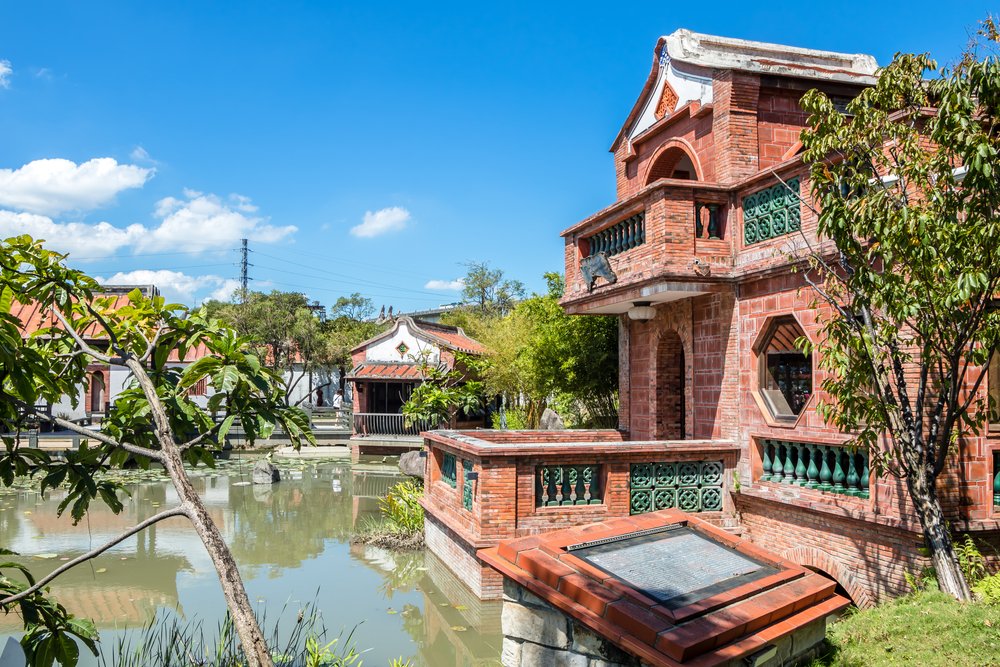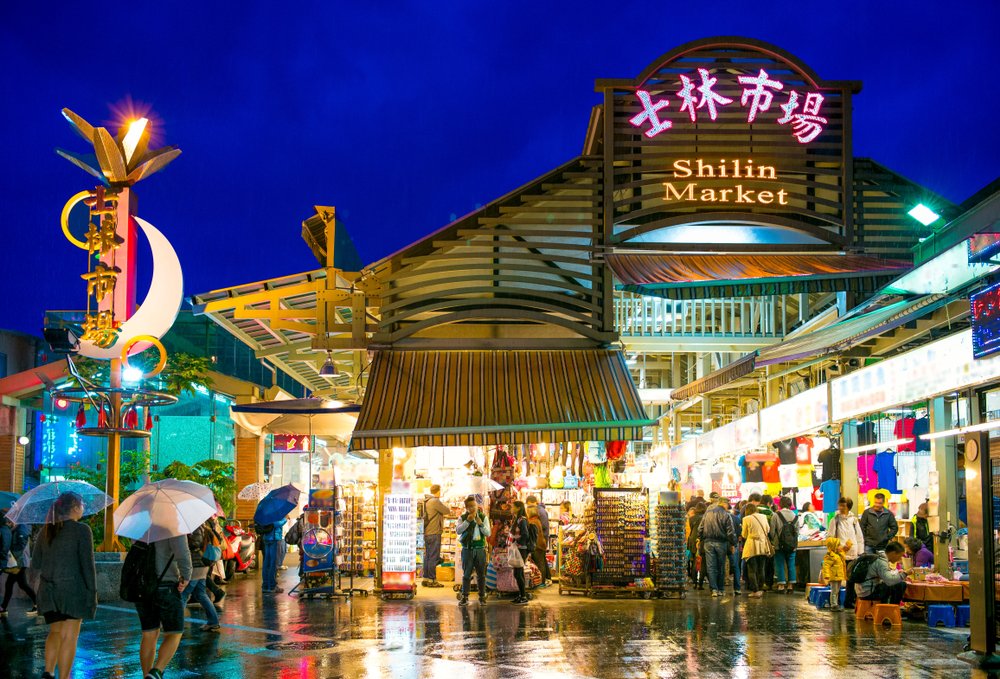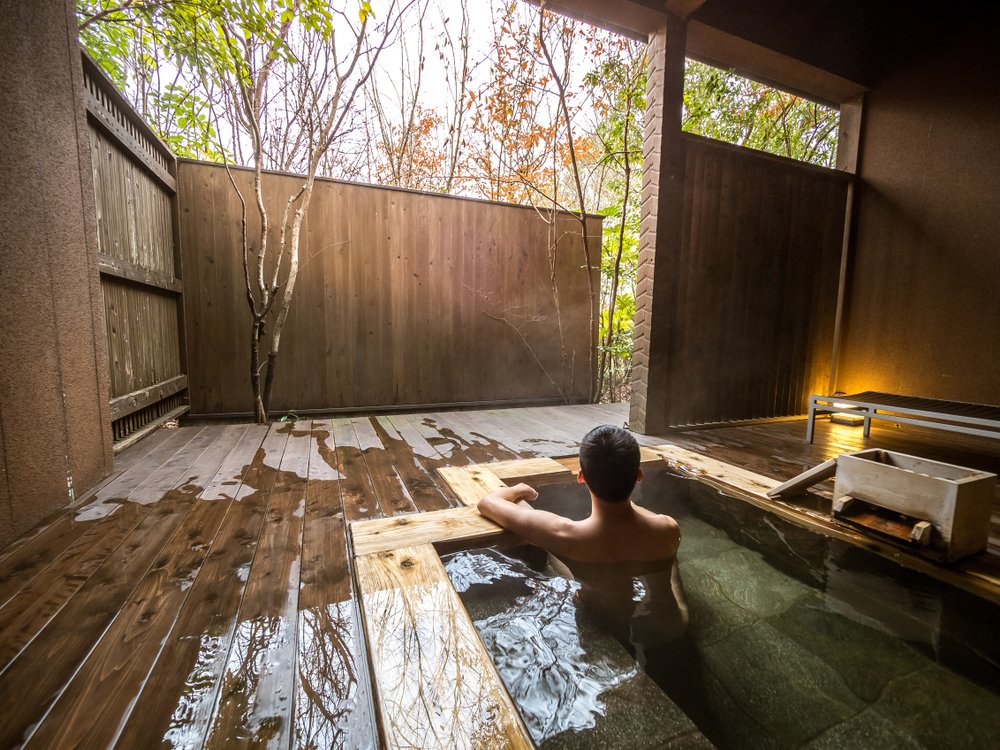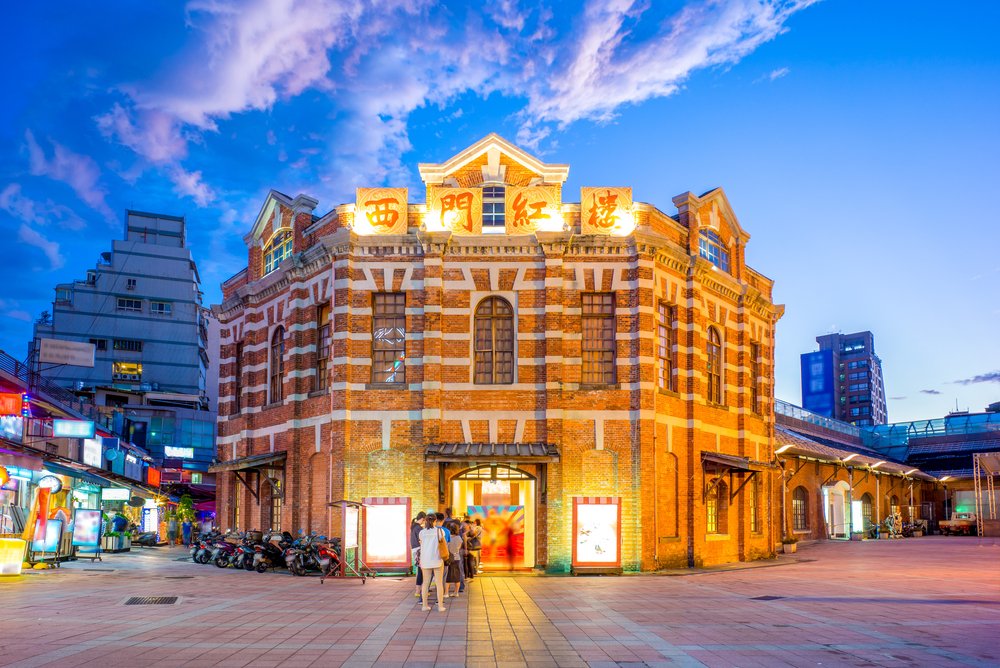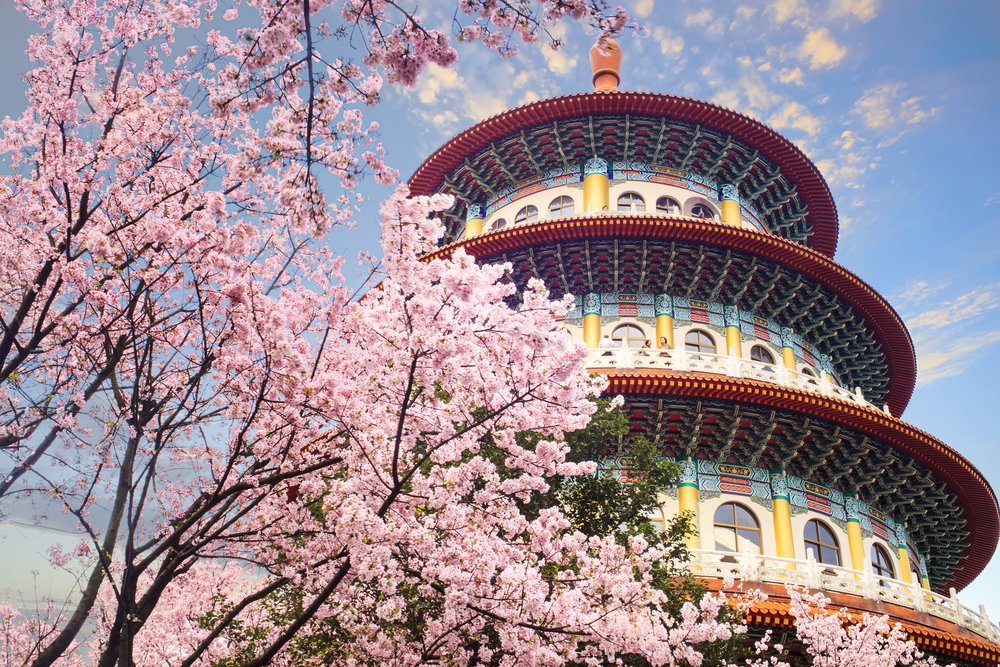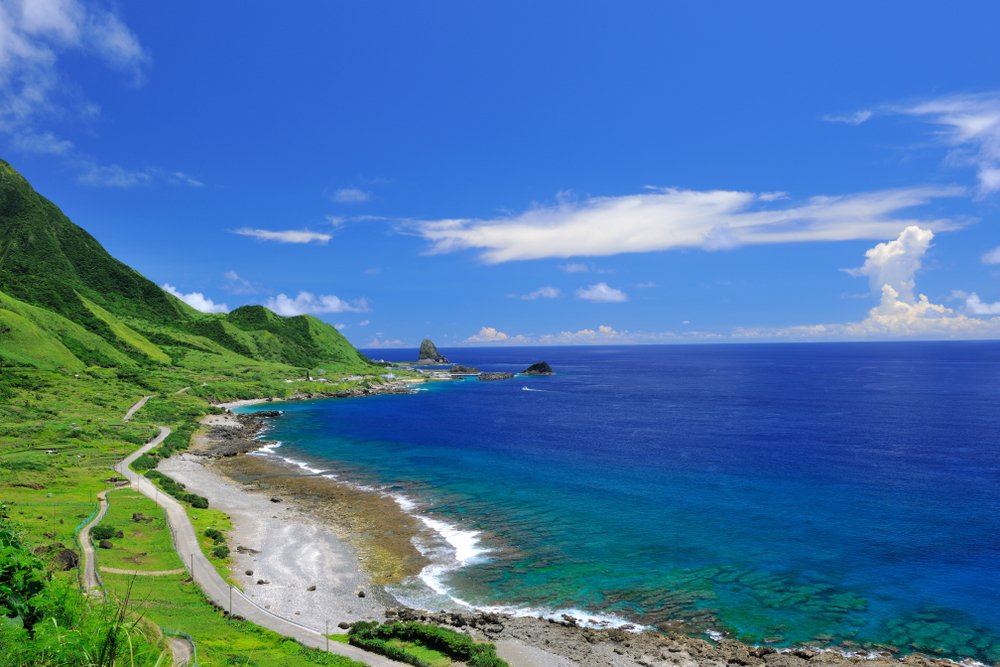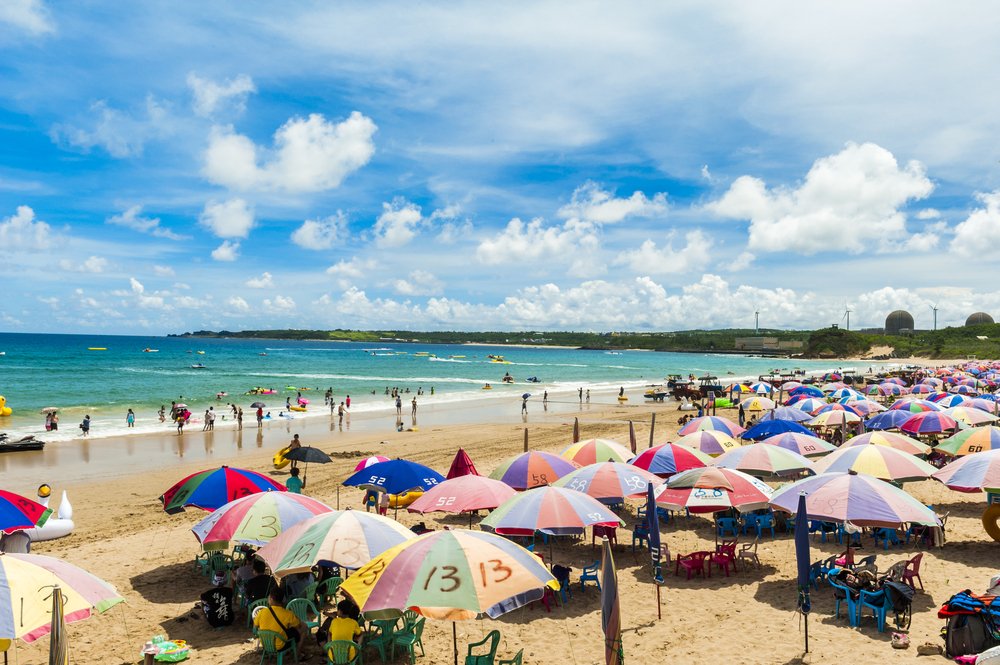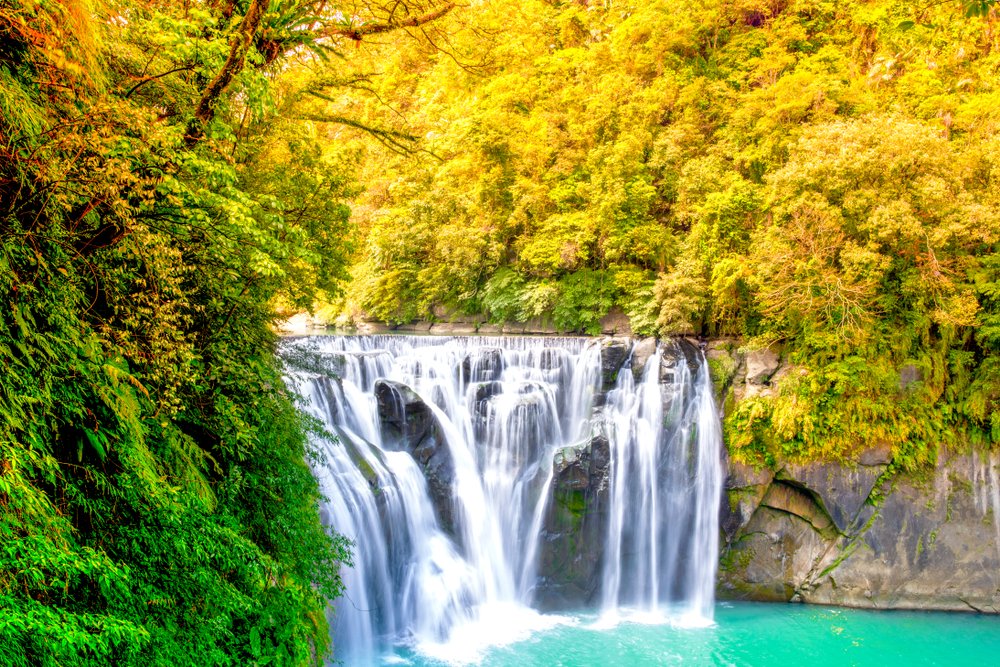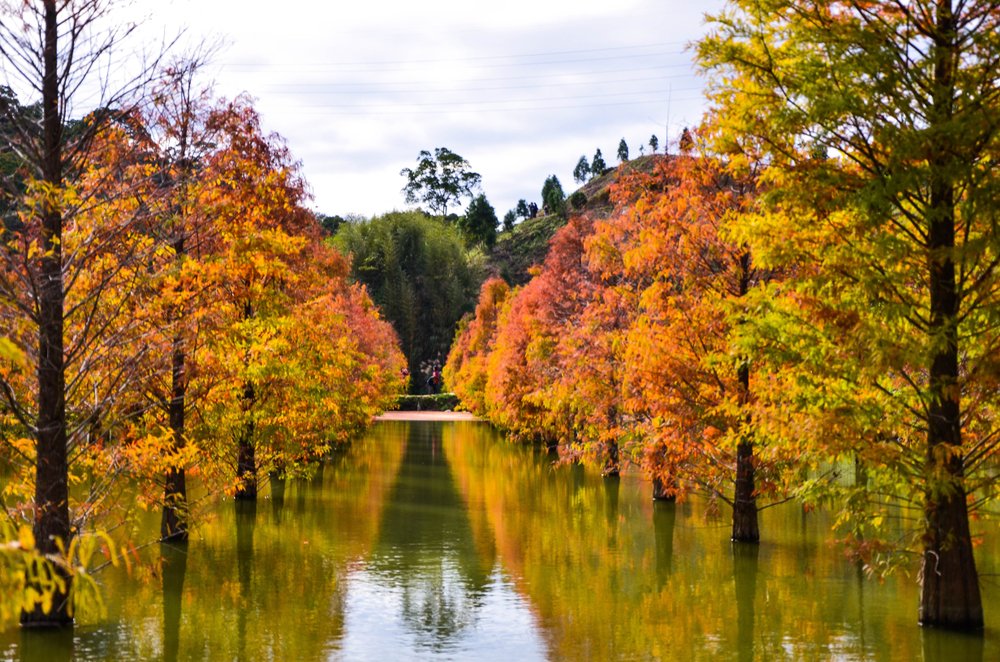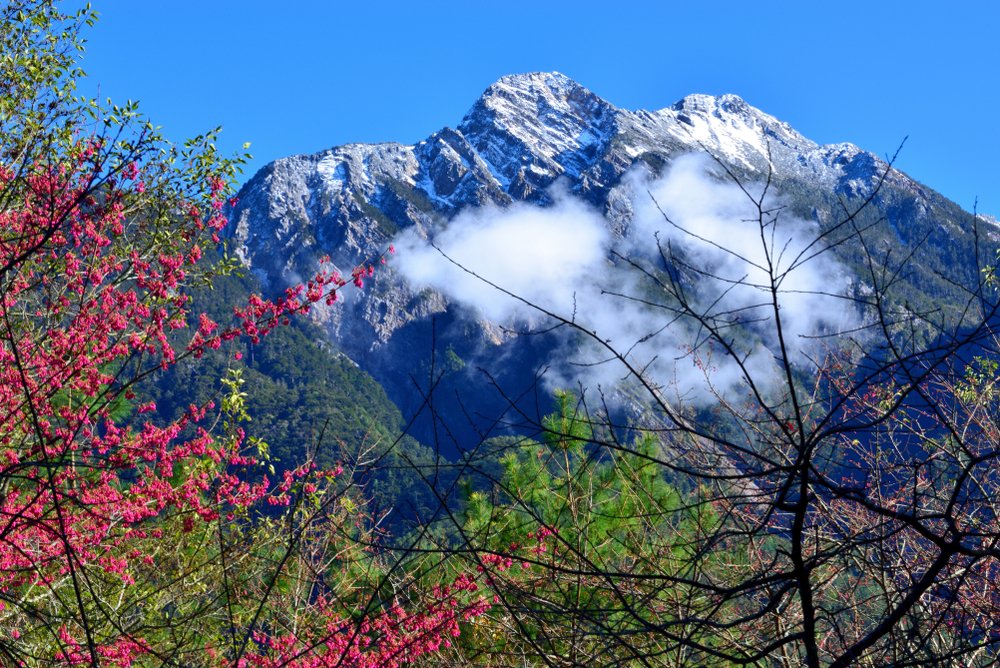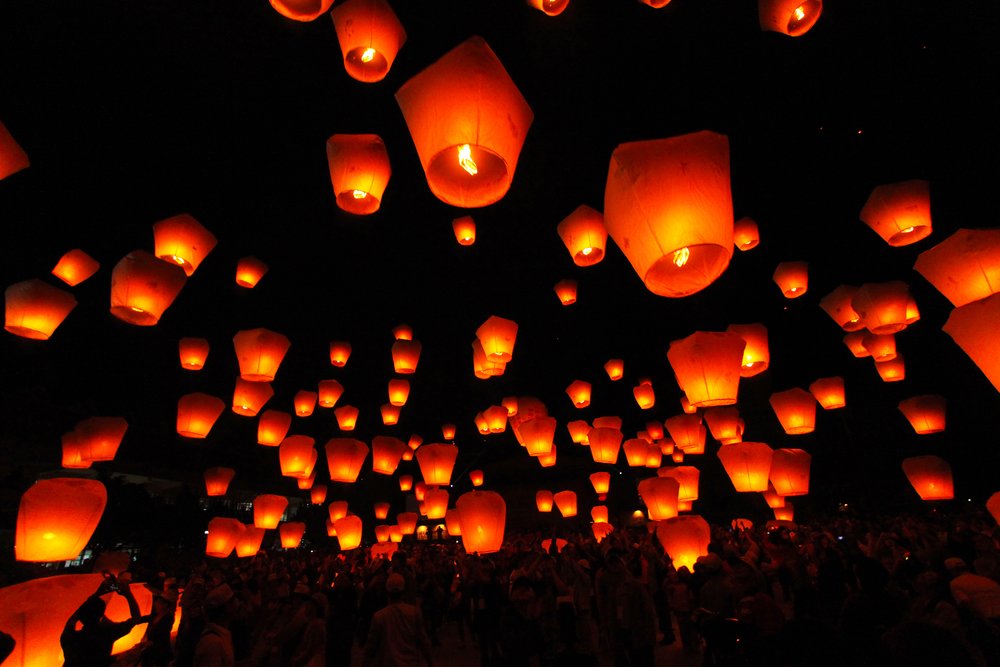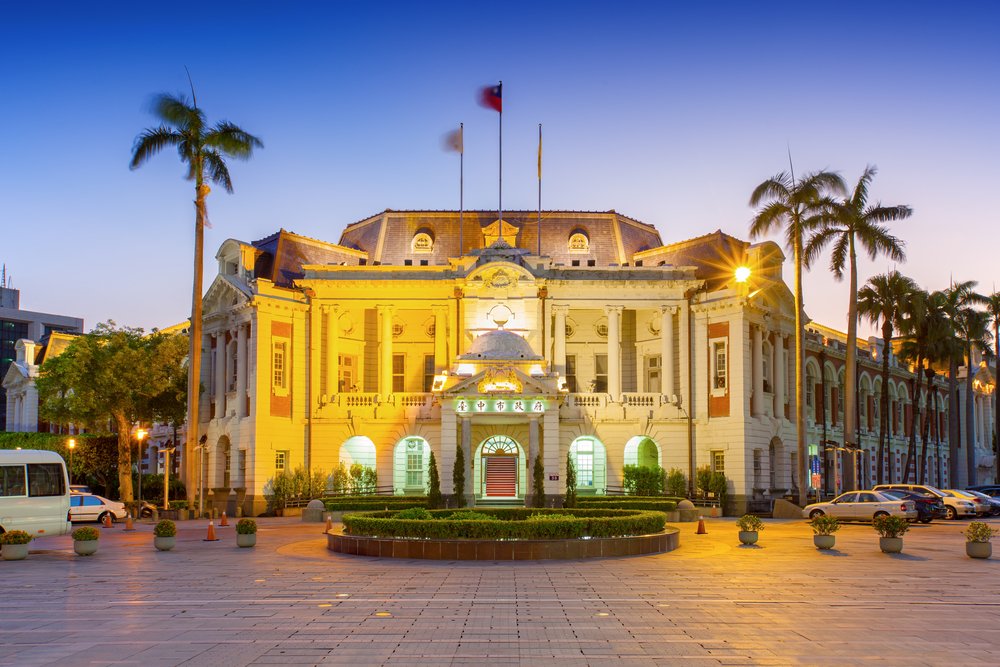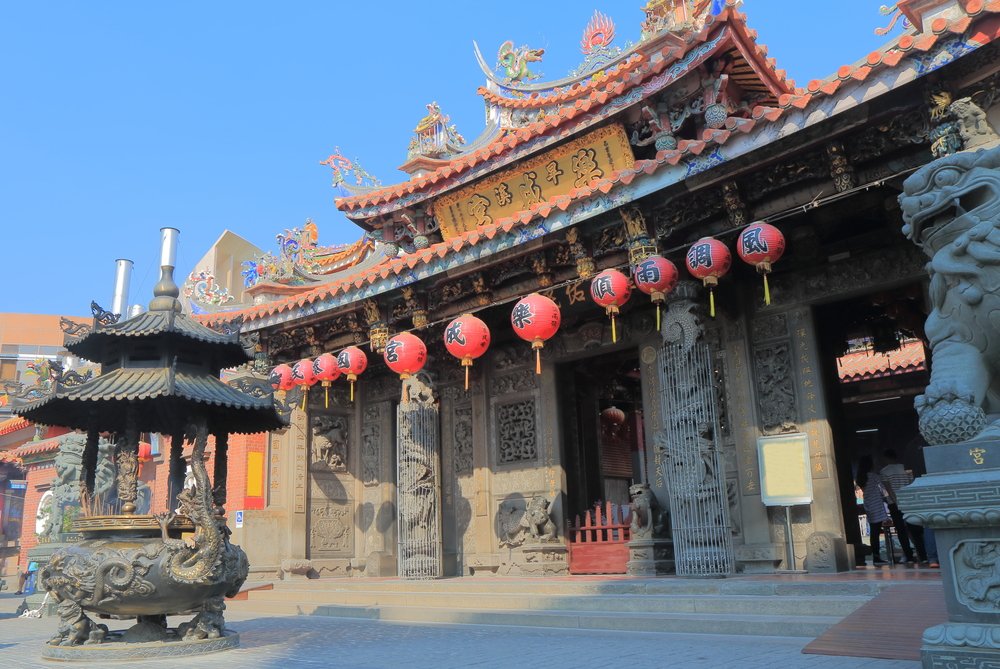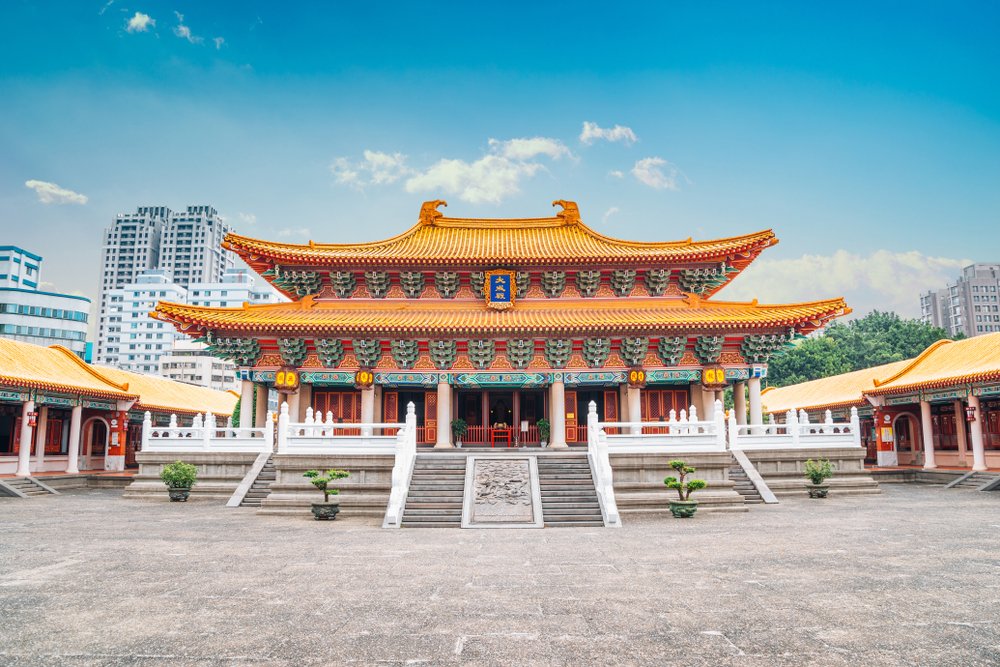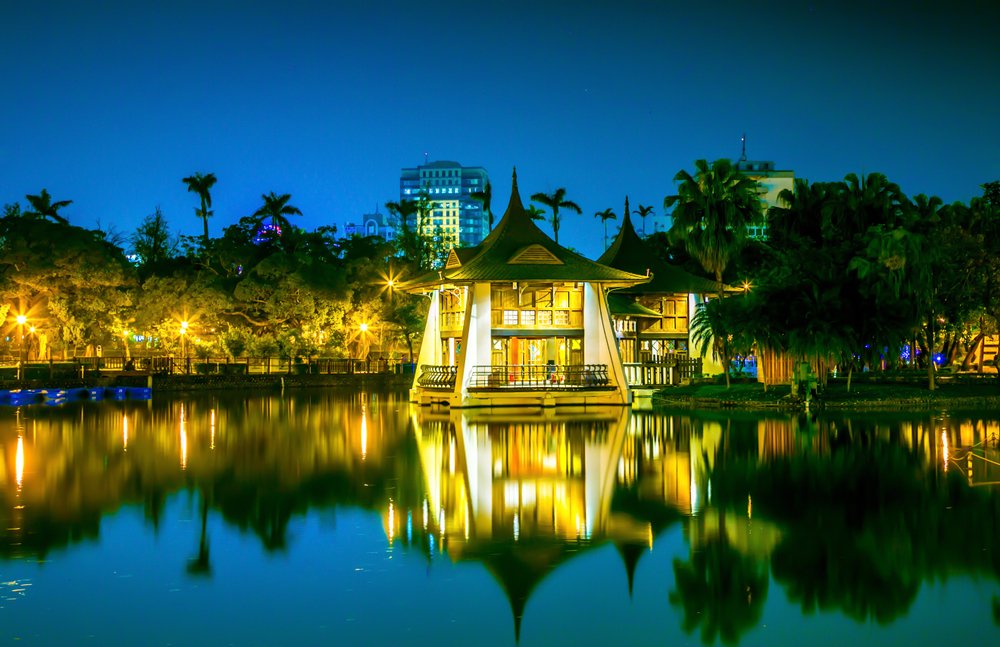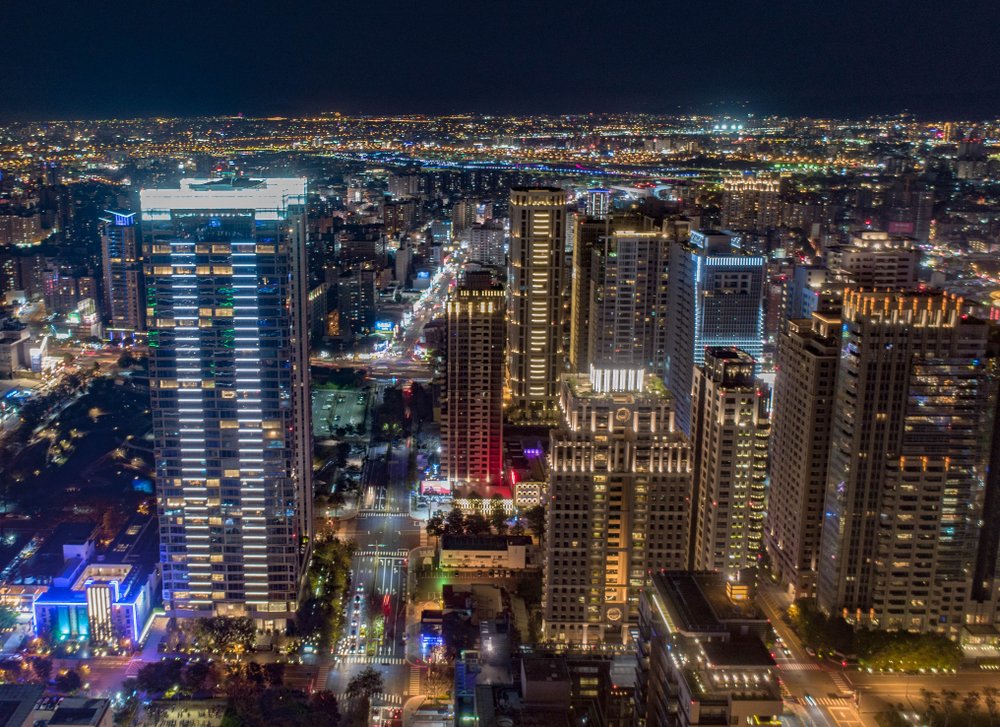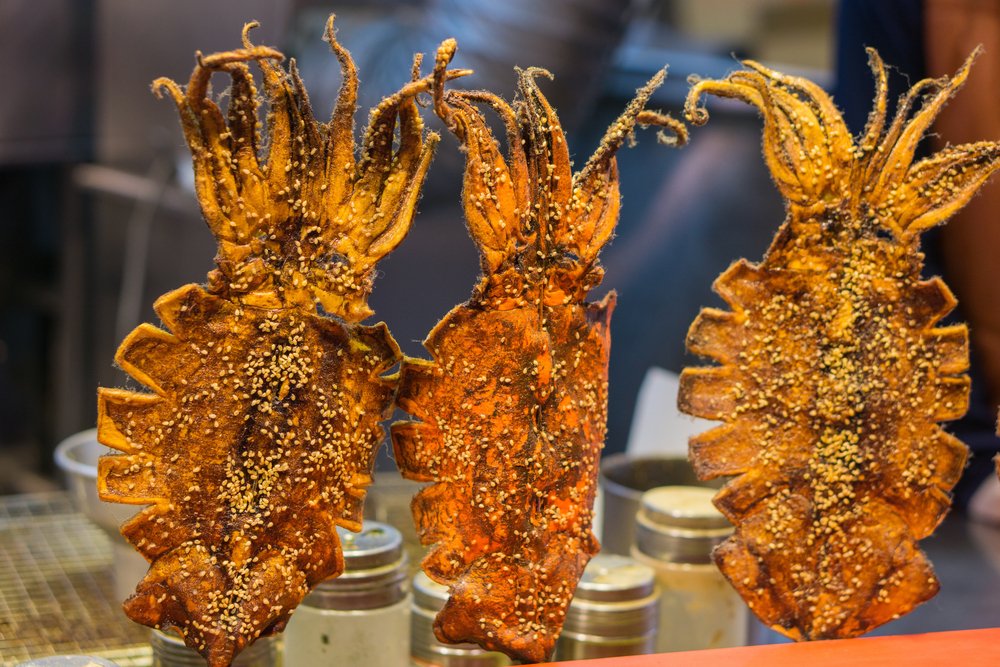If you love Instagram and you’re planning a trip to Taipei, this is the Taipei photography guide for you!
I’ve combined my two weeks of knowledge of traveling around Taipei and scoured Instagram for some of the best and more unique Instagram places in Taipei.
I’ve included addresses and tips for how to get the best photo in each!
While there are 15 Instagram spots in Taipei on this list, I’ve included an additional 3 spots at the end which are easy day trips from Taipei as a bonus!
Map of the Best Taipei Photography Spots
Best Instagram Spots in Taipei
Elephant Mountain
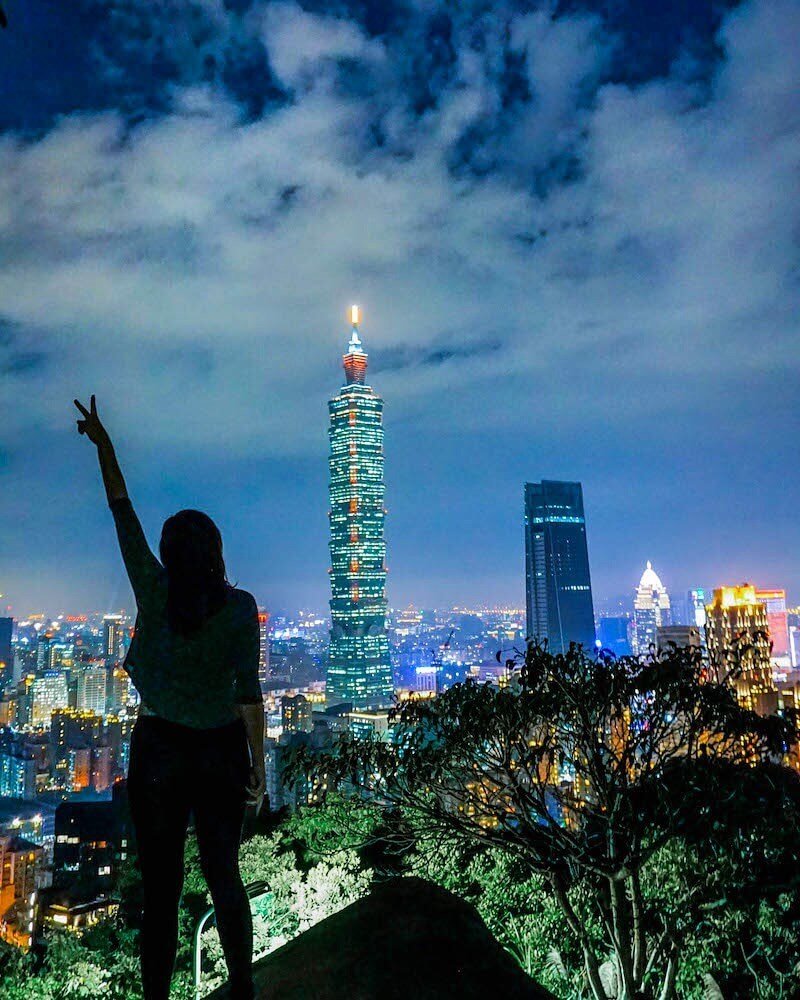
One of my favorite Instagram places in Taipei is the beautiful Elephant Mountain.
This short hike takes you to a wonderful viewpoint above the Xinyi district of Taipei, home to many of the city’s most distinctive skyscrapers.
To get here, take the MRT to Xiangshan, follow the signs for Xiangshan/Elephant Mountain, which will take you past a park to a long staircase.
It takes about 20-25 minutes from the metro to reach the top of the stairs to the viewpoint.
There are several areas where you can take a great photo here at Elephant mountain, I’ll share the two most popular.
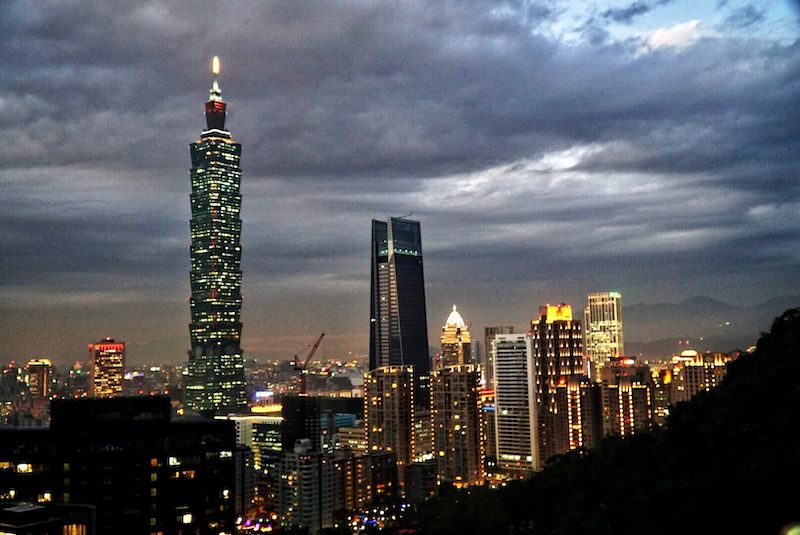
First, there is a wooden viewing platform with railings which you’ll come across first in your hike.
You’ll always see plenty of locals and tourists there, taking selfies with the gorgeous Taipei 101 in the background.
If you want an unobscured photo of the Taipei 101 without anyone in it, this is your best choice.
Second, if you keep going up the stairs, you’ll encounter a big rock.
Usually there is a line of people patiently waiting to climb this big boulder so they can get themselves in the best Instagram shot of Taipei.
It’s a bit difficult to scramble up here, so be careful, and I definitely recommend wearing some sort of sneaker (I was wearing my Birkenstocks so I had to take them off before I climbed the rock).
It’s lovely at sunset or after dark, but it is also more crowded then. I’d estimate I waited about ~15 minutes for this photo.
Location: Xiangshan, Taipei City, Xinyi District, Taiwan
Cost: Free!
Stairs near Taipei City Hall

For one of the more unique angles of Taipei 101, I highly recommend this area. We got super lucky, as we stumbled across without even trying!
In fact, for the longest time I couldn’t remember exactly where I took this photo but when I decided to write this post I wanted to put a little more research into it.
With some brain-digging and some Google Maps street-viewing, I was able to find the exact staircase where I took this shot!
It’s located right near the MRT Taipei City Hall Station, near the Starbucks there, just around the corner from one of my favorite Taipei hotels, the W.
Location: Near Taipei City Hall MRT, Taipei City, Xinyi District, Taiwan
Cost: Free!
Taipei 101 Observatory
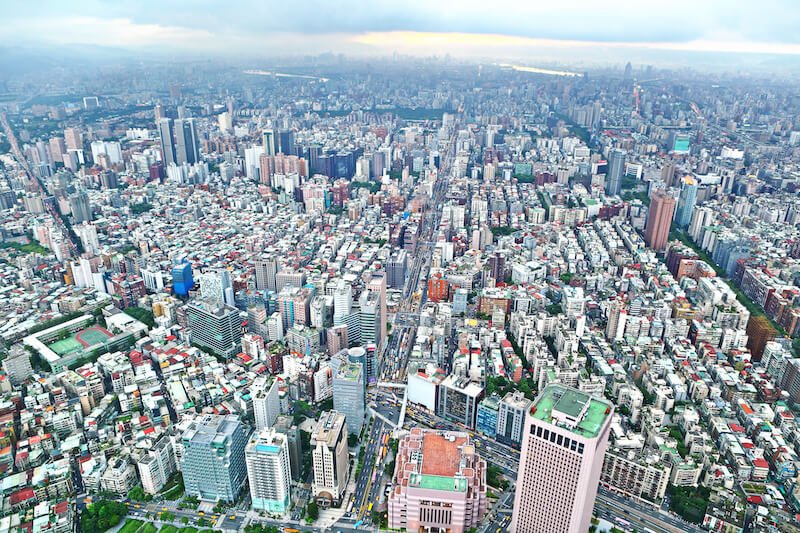
Of course, while you’ll want a few snaps of the Taipei 101 from the outside… nothing beats the view from the top!
The lines can be a huge pain here, so I recommend a priority skip-the-line ticket which is a little extra money but worth it if you’re on a short time crunch while you’re in Taipei.
If you don’t mind waiting a bit but paying less, you can still buy an e-ticket online, which is cheaper than buying them at the actual ticket desk in Taipei!
It also allows you to skip the ticket queue (but not the lines to the elevator).
For the best views (and photos), there’s a new experience, the Skyline 460 Observatory, where you get to see the stunning views of the skyline 460 meters up (over 1,500 ft!)…
… and all that while standing outside, strapped in by a safety harness, for the most unadulterated view over Taipei — the closest thing to flying over it you can do!
Location: Taipei 101, Taipei City, Xinyi District, Taiwan
Cost: Roughly $20 for normal tickets (book via Klook here) or $40 for skip-the-line tickets (select the fast track entry option).
You can also book the new Skyline 460 experience on Klook, but it’s a rather expensive, around $97 USD.
Chiang Kai-Shek Memorial Hall
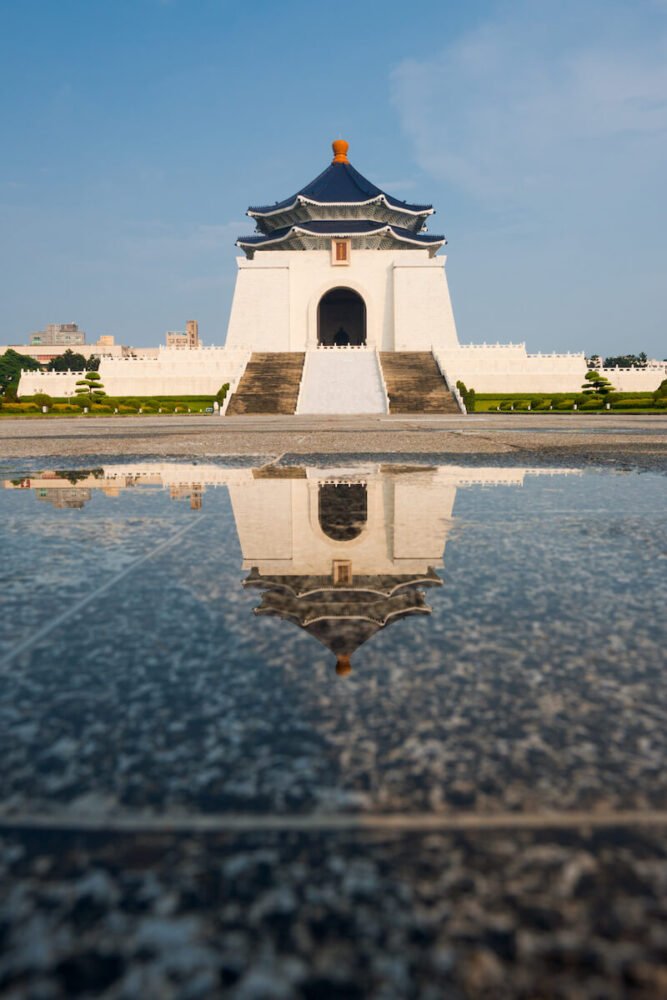
Located at the head of Liberty Square, one of the most important places in Taipei, you shouldn’t miss the opportunity to visit the Chiang-Kai Shek Memorial Hall (and snap a few photos along the way).
This is a really beautiful square, and I can think of several distinct spots that would make for unique Taipei Instagram photos.
You have the serene blue-and-white pagoda of the Chiang-Kai Shek Memorial Hall, but you also have the stunning riot of colors of the twin National Theater and National Concert Hall.
There’s also the Liberty Square Arch (one of three gates which flank the memorial hall) — more on that one in a second.
This area is always packed with people, so I do recommend getting an early start one day in this area.
Since you can get snap a variety of Taipei photo spots all in one small area, it offers a good bang for your early-rising buck.
Location: Liberty Square, Democracy Blvd, Zhongzheng District, Taipei City, Taiwan
Cost: Free!
Liberty Square Arch
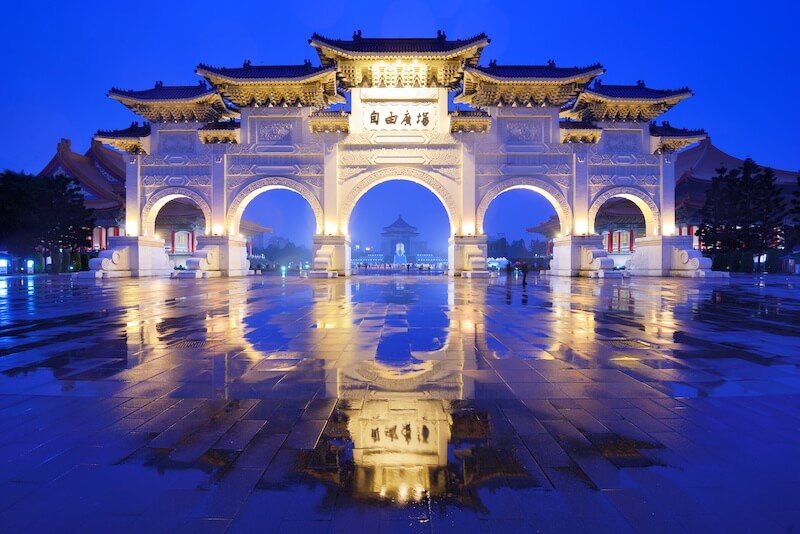
One of the classic Taipei Instagram shots is the view of the main arch gate that begins Liberty Square.
Luckily, there often always to be water on the ground so you can get those lovely reflections that really elevate the photo.
In peak Instagram-ness, I saw some people with a hose spraying water on the ground and a photographer scaring pigeons away at the ‘perfect time’ to get shots of birds flying mid-air.
It’s a little contrived, not exactly the most serendipitous of shots, but dang, is it pretty.
It’s also quite nice to see at night all lit up, so I suggest returning then!
Location: Liberty Square (south entrance) Democracy Blvd, Zhongzheng District, Taipei City, Taiwan
Cost: Free!
2/28 Peace Park

This lovely park not far from CKS Memorial Hall is definitely worth a photo stop while in Taipei.
I’ve seen a lot of photos from it all over, usually from far away so it looks like it’s sort of ‘floating’ in the middle of a pond.
I love the view when you look at it head on as well, and it’s better for taking photos with yourself in it!
Location: 2/28 Peace Park (north side), Zhongzheng District, Taipei City, Taiwan 100
Cost: Free!
The Grand Hotel Taipei
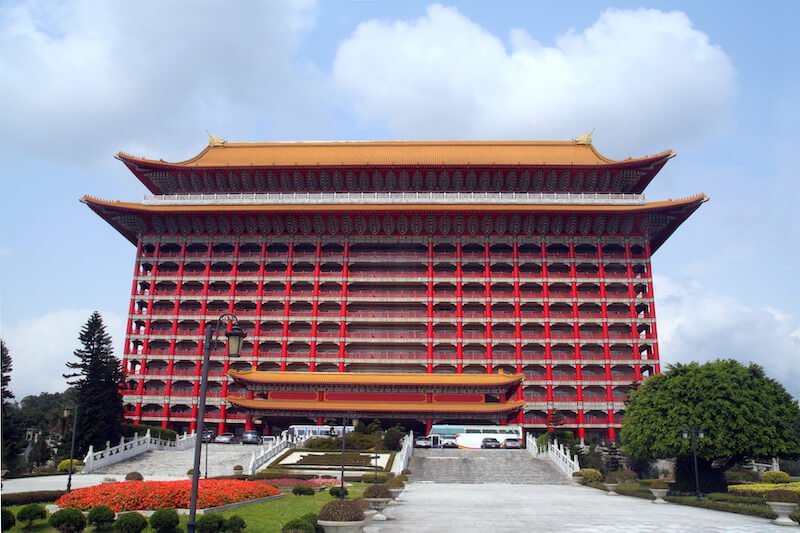
A famous Taipei landmark, this gorgeous hotel is one of the world’s tallest buildings done in the Chinese classical style.
It was completed in 1973, after taking a whopping 21 years to finish.
The building was built by Yang Cho-Cheng and reflects the vision of former president Chiang Kai-shek to have a 5-star hotel that would be suitable for foreign ambassadors to Taipei.
His goal was to give legitimacy to the KMT government despite being displaced from Mainland China, while also attracting foreign guests and promote Chinese culture through its architecture.
Today, it’s still a much-loved Taipei hotel, and while you can definitely stay there (for quite an affordable price, in fact!) it’s also a popular Taipei photography spot.
Location: No. 1號, Section 4, Zhongshan North Road, Zhongshan District, Taipei City, Taiwan
Cost: Free to visit the outside, rooms around $80 per night and up (depending on time of year)
Longshan Temple
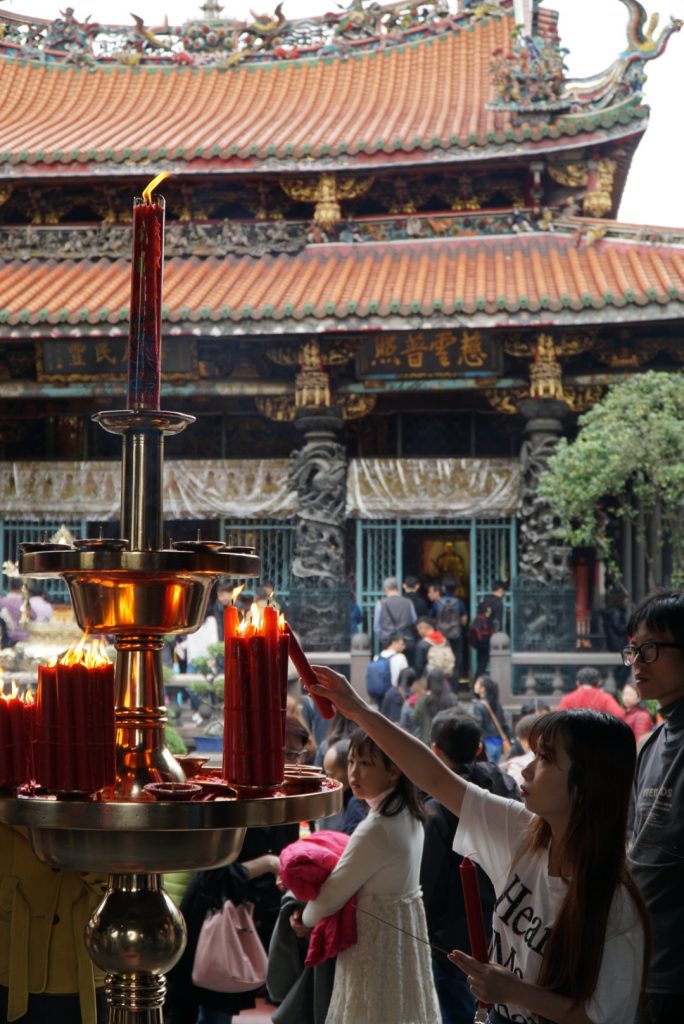
One of the most visited temples in Taipei, you really shouldn’t miss Longshan Temple when you visit the city – not just for the ‘gram, but for how unique it is.
You’ll encounter people praying in a way specific to Taiwan, using a blend of Buddhist tradition and folk practices.
There are some interesting customs that the Taiwanese observe when praying that I’ve never seen elsewhere.
For one, there are small, painted pieces of wood that are shaped somewhat like a segmented orange which can be found all over the temple.
It’s common for people to pick up the painted crescent-shaped wood, hold it in their hands, toss it to the ground, and pick it back up again.
They’re apparently called “jiaobei blocks” or “moon blocks”, which are thrown in pairs and used as a way of telling the future!
Besides that, it’s just really freakin’ pretty, and there’s also a lovely garden in the front area which would make another nice Instagram spot in Taipei – two for the effort of one!
Location: No. 211, Guangzhou Street, Wanhua District, Taipei City, Taiwan
Cost: Free to enter (note to dress respectfully)
National Revolutionary Martyrs’ Shrine
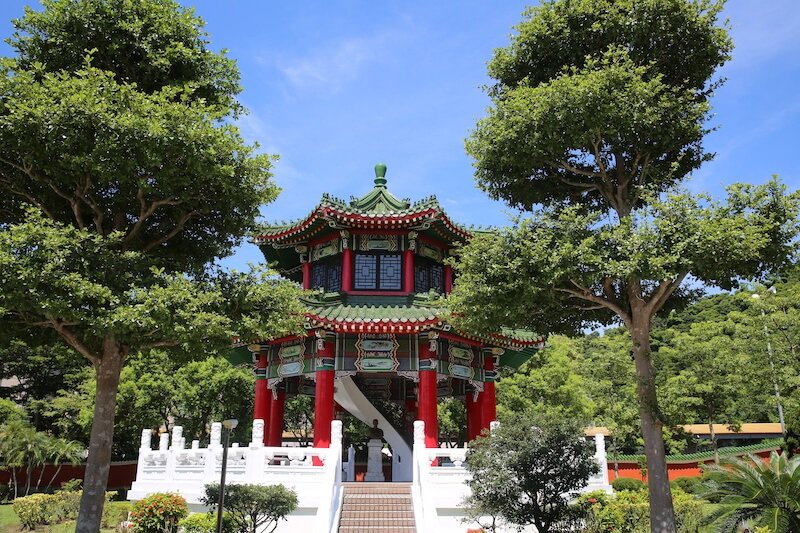
Located not far from the Grand Hotel Taipei (so easy to get snaps at both and cluster together), the beautiful National Revolutionary Martyrs’ Shrine is one of my favorite underrated Taipei photography spots.
It doesn’t get nearly the same attention as other places like the CKS Memorial Complex and Elephant Mountain.
Still, it is so distinctly and uniquely Taiwanese to me!
I love the beautiful bright red popping against the lush green background and the symmetry is also really eye-pleasing.
Location: No. 139號, Beian Road, Zhongshan District, Taipei City, Taiwan
Cost: Free!
Yongkang Shopping Street
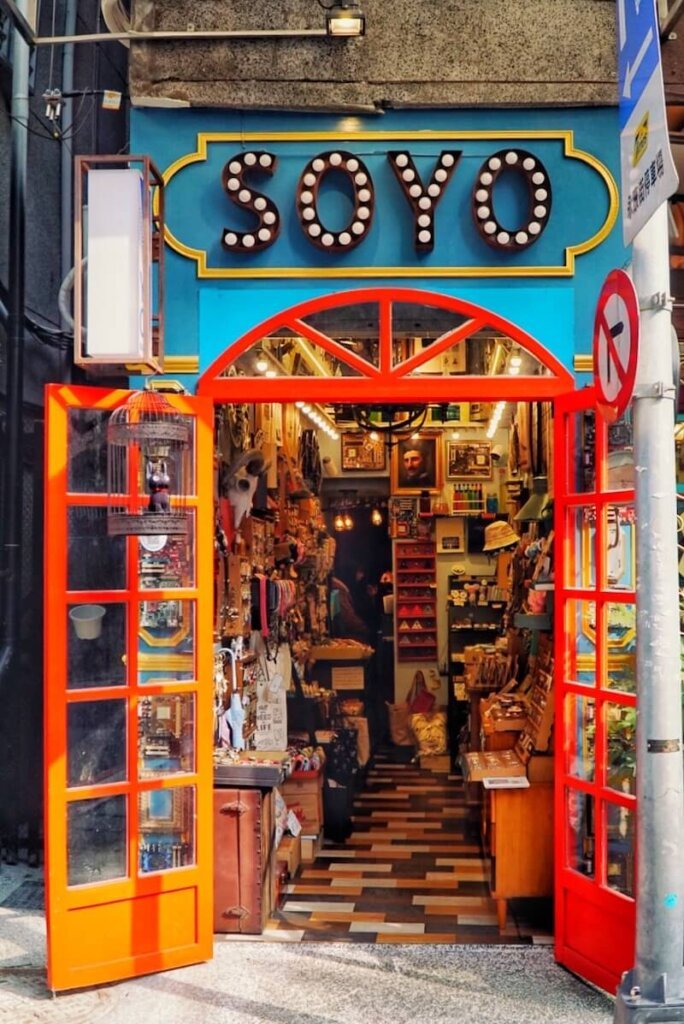
Home to the original Din Tai Fung, the Yongkang Shopping Street is one of my favorite places to stroll in Taipei.
Chock full of cute ice cream shops, cafés, umbrella stores (seriously, the Taiwanese love their umbrellas so much they have entire stores dedicated to them), and Instagrammable foods, it’s a dream!
Yongkang Street is a must-visit in Taipei for photography enthusiasts and Instagrammers everywhere.
My favorite spots on this street are Elephant Machine Coffee and the ultra-colorful Soyo shopfront!
Location: Yongkang Street, Da’an District, Taipei City, Taiwan
Cost: Free to walk, but you’ll likely want to shop!
Beitou (Hell Valley + more)
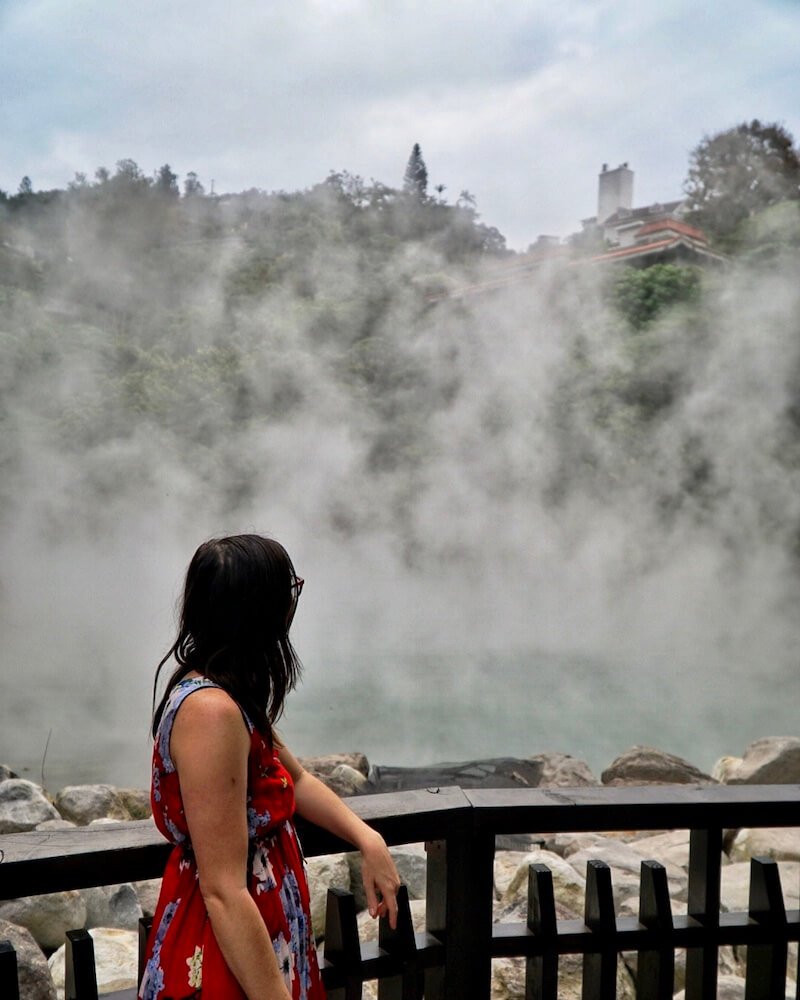
The hot springs of Beitou are a wonderful escape from the business of Taipei!
There are a number of cool photography spots near the Xinbeitou area, but I loved visiting so-called “Hell Valley.”
With its nearly boiling waters, the steam rises off the teal-blue like something out of a movie!
There are also a number of wonderful hot spring hotels you can enjoy, either as an overnight guest or by buying a day pass, that would make great Instagram spots.
The nicest hotel in the area is Grand View Resort Beitou, and it was designed by the architect of Taipei 101.
Rooms can be had there for an exorbitant price, but you can also book a day pass to a hotel like the Gaia and use their stunning facilities!
Location: Depends, but the area around the Xinbeitou MRT is where most spa hotels are.
Cost: Around $50 for a day pass to a spa hotel, or free to walk around the Beitou area
Jingshan Suspension Bridge
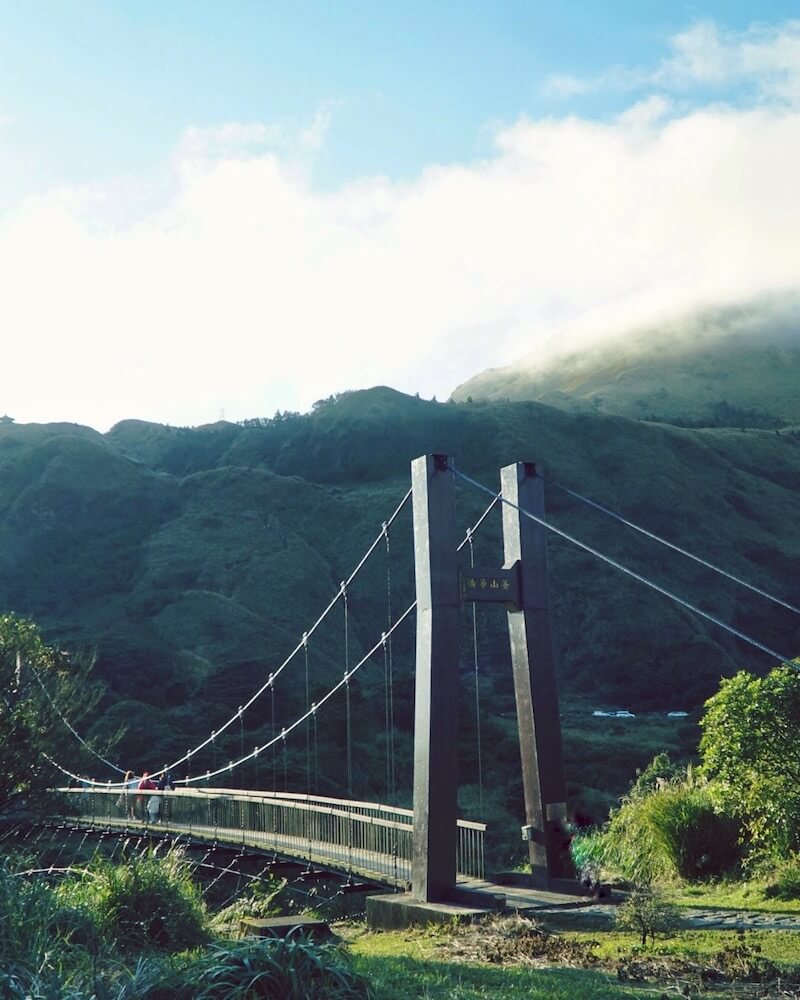
Did you know Taipei had a national park, complete with volcanoes and hot springs, right in the city limits?
Yangmingshan National Park is a fantastic place to spend a day in Taipei, and I highly recommend visiting it on your trip if you have the time.
This suspension bridge was one of my favorite places in Taipei (it’s located near the Lengshuikeng Creek).
It’s just insanely photogenic, but it is often crowded, so a shot like this will take some patience.
There are actually a number of great Instagrammable spots in Taipei’s Yangmingshan National Park.
While this post will by no means list all of them, I’ll share a few of my favorites!
Location: Jingshan Suspension Bridge, Yangmingshan National Park, Taipei City, Shilin District
Cost: Free (though you’ll need to pay for the bus to the park)
Juansi Waterfall

Yes, Taipei’s Yangmingshan National Park has its own waterfalls, too.
Who says you have to go out to Shifen to chase waterfalls?
It’s just a 1.3-mile trail out-and-back, so it’s not too tough of a hike, either.
Location: Juansi Waterfall, Yangmingshan National Park, Taipei City, Shilin District
Cost: Free, though you’ll need to pay for the bus to the park
Lover’s Bridge in Tamsui

I loved taking a trip out to the end of the MRT at Tamsui Old Street, where there are so many lovely walks to be had.
The Old Street area where you can sample all sorts of Taiwanese delights is a must!
But the real draw for Instagram lovers is Lover’s Bridge, which is gorgeous either during the middle of the day when you can really capture all its white geometrical wonder.
It’s also lovely at sunset or after dark, when you can get some beautiful silhouettes of it or see it all lit up!
Location: No. 199, Guanhai Road, Tamsui District, New Taipei City, Taiwan
Cost: Free
Ximending
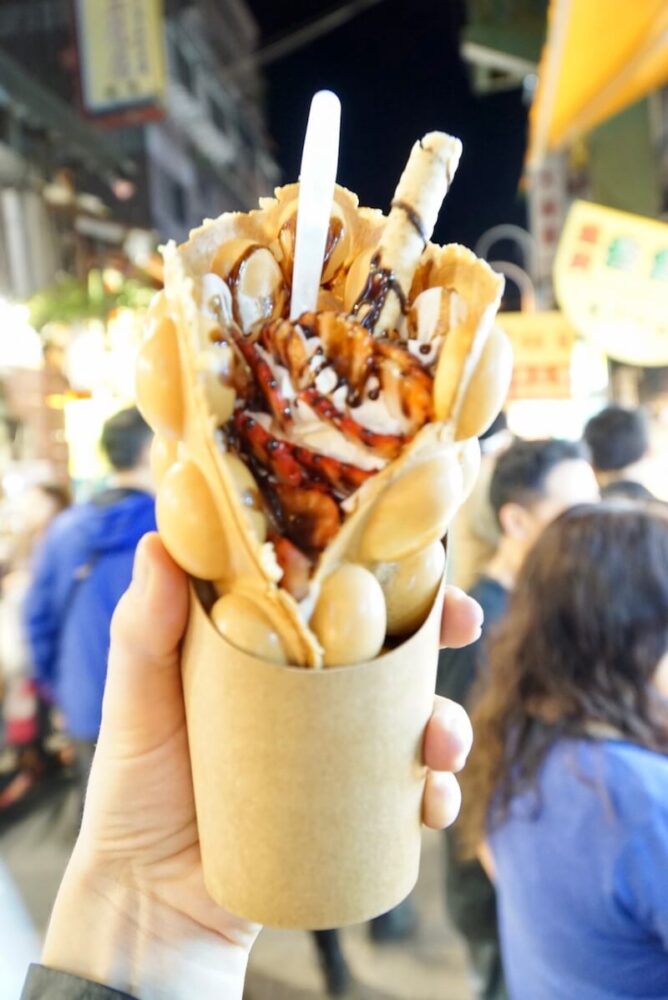
The Ximending area is the place you want to be in Taipei at night!
It’s when the lights all turn on and the area gets a really special buzzy vibe that can only be compared to Shinjuku in Tokyo or Dotonburi in Osaka.
Play with portraits or food photos with a low f-stop number to get some good bokeh to really capture the brightness of the neon around.
Note, though: you’ll want a tripod to get the best shots at night!
Location: Near the Ximen MRT, Wanhua District, Taipei City, Taiwan
Cost: Free!
Best Instagram Spots Near Taipei
While none of these spots are in Taipei proper, they are all nearby and many of them are included on my Taipei day trips guide.
I’ll share a few of my favorites belong, but there are so many I don’t have room for!
Rainbow Village (Taichung)
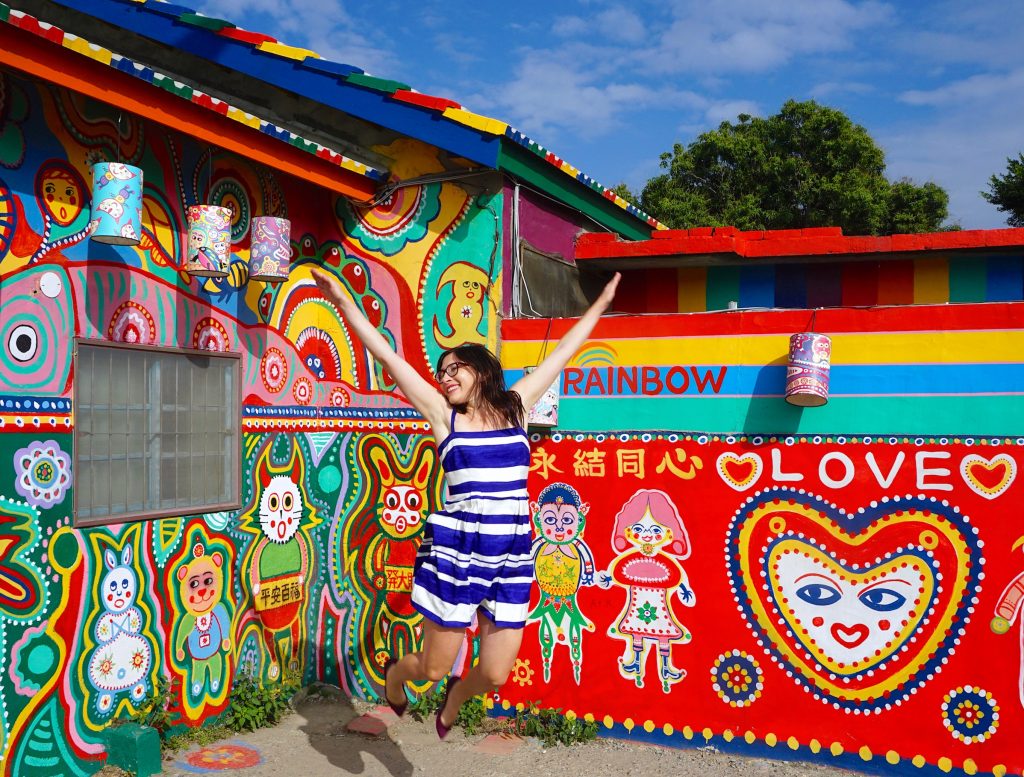
A zippy hour away on the high-speed rail, it’s quite easy to pop into Taichung for a day trip while in Taipei.
While Taichung is full of Instagram-friendly places (Miyahari Department Store definitely being one of them – I have a Taichung itinerary you can steal!), the most obvious is Rainbow Village.
Not actually created for Instagram, this is the life’s work of an old man to transform and save the community he grew up in through art.
The story behind it is quite poignant, and “Rainbow Grandpa” is often sitting in the gift shop watching everyone admire his work.
If you see him, be sure to say hello and make a small purchase or donation to support him!
Location: Rainbow Village, Taichung City, Nantun District
Cost: Free to enter, though you’ll need to take the train to Taichung
Jiufen
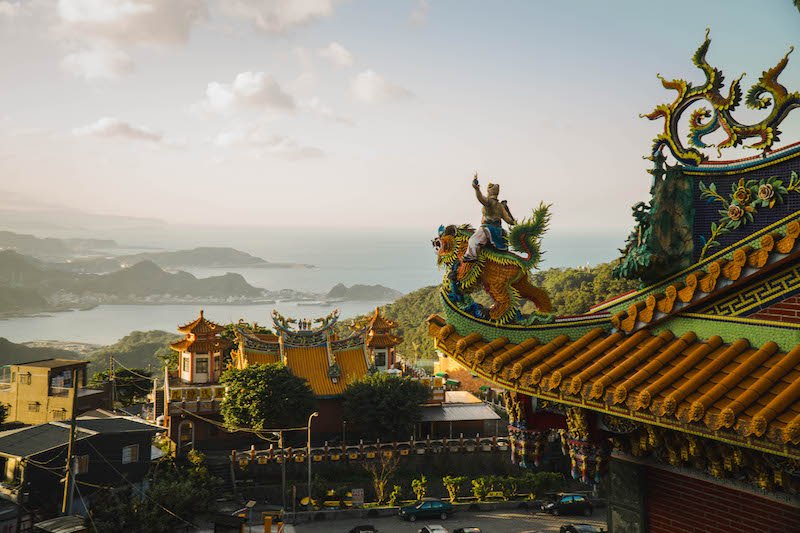
If you go by public bus to Jiufen, the very first thing you will see is this gorgeous temple with views to the coast below. Not bad, eh?
It’s certainly a warm welcome to lovely Jiufen, which is gorgeous but can be extremely crowded with tour groups.
There are also so many other great views — the teahouses, the lanterns, the narrow streets, the food — but I wanted to show one unique angle I don’t usually see!
Location: Jishan Street, Ruifang District, New Taipei City, Taiwan
Cost: You can get here for a few $ by public bus (crowded) or by a guided tour. A tour is recommended — a tour of Jiufen only is just $20, or you can select the option for Shifen + Jiufen by night for just $10 more!
Shifen Waterfall
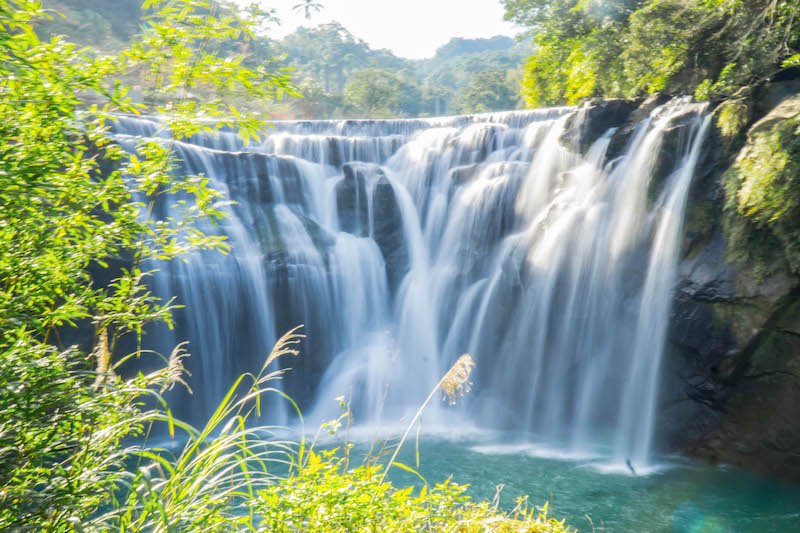
With beautiful turquoise-green waters, the trip to Shifen Waterfall was one of my favorite days in Taipei.
There are several great photo spots in the Shifen Waterfall park area – the park with its elephant statues covered in red flags, the suspension bridge, so much more – but I’ll leave that for you to discover.
Location: Shifen Waterfall, Taiwan, New Taipei City, Pingxi District
Cost: ~$2 entrance fee, plus transit. It’s possible (but a bit complicated) to go by public transit, or you can do a combined Shifen & Jiufen tour for about $30!
Allison Green is a former teacher who has been travel blogging since 2016. She has a Masters in Teaching and a B.A. in English and Creative Writing. Her blog posts merge her background as an educator with her experience traveling to 70+ countries to encourage ethical, meaningful travel. She has been a speaker at the World Travel Writers Conference and her writing, photography, and podcasting work has appeared in National Geographic, CNN Arabic, CBC Canada, and Forbes, amongst others. Now a full-time traveler, she has lived in Prague, Sofia, New York City, and the San Francisco Bay Area.
